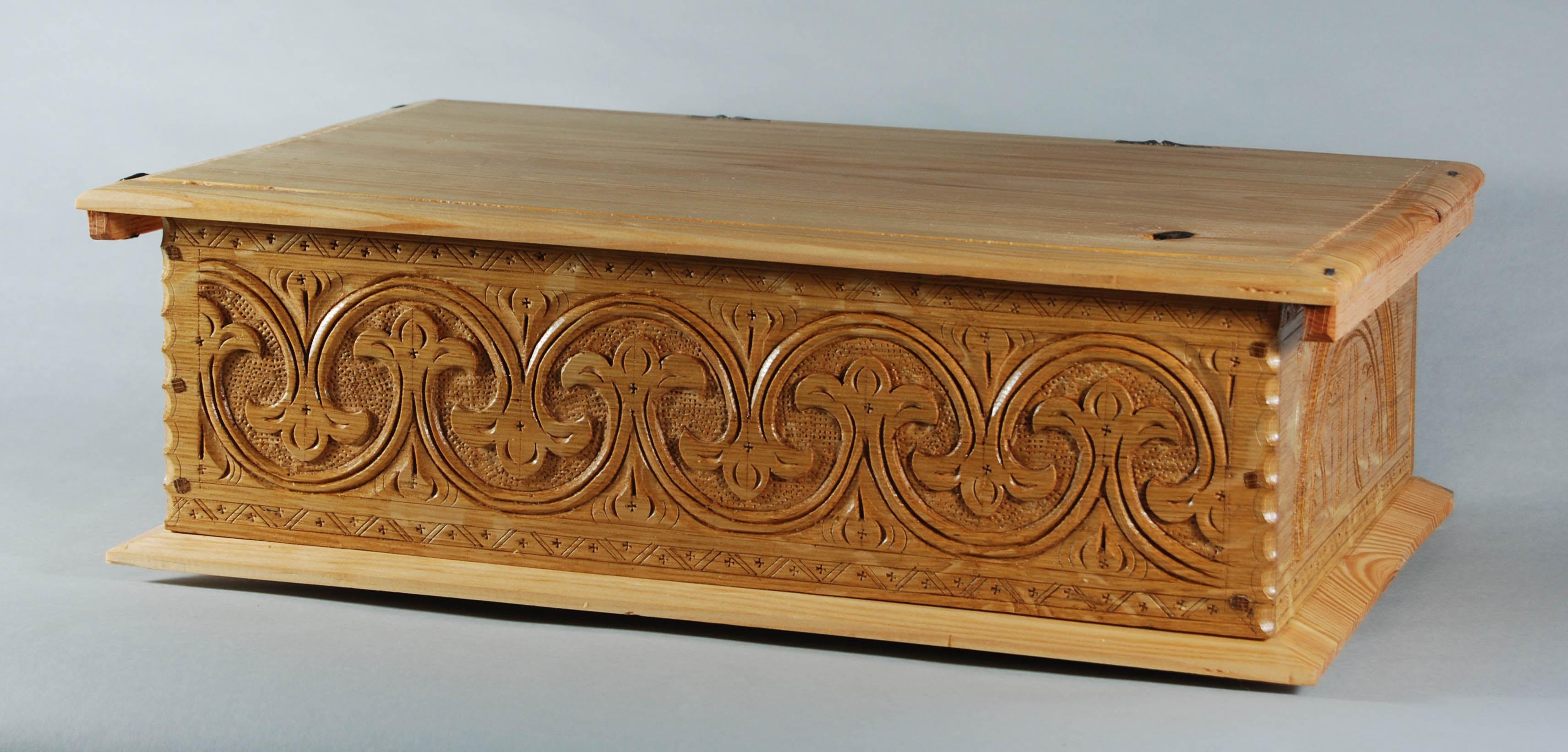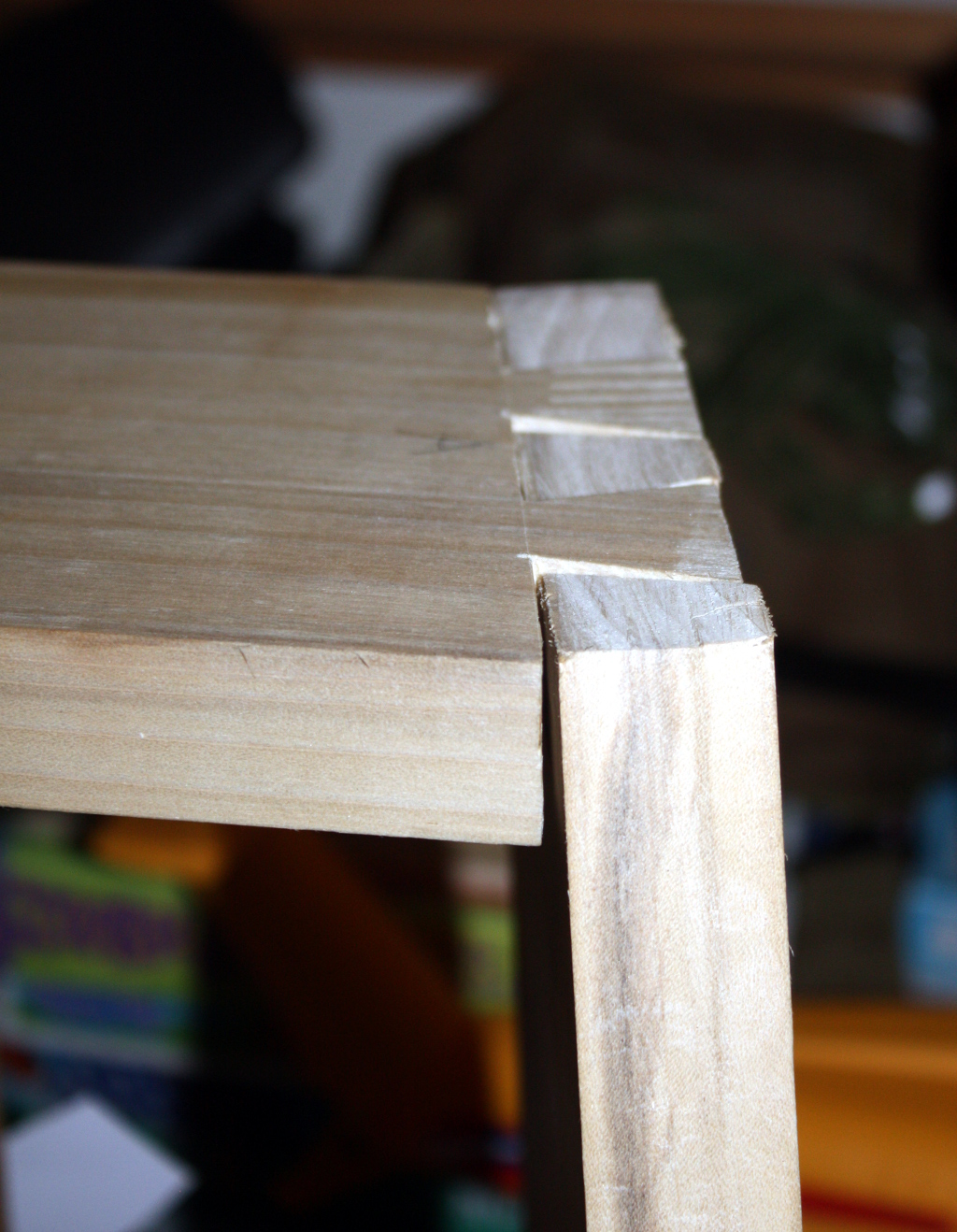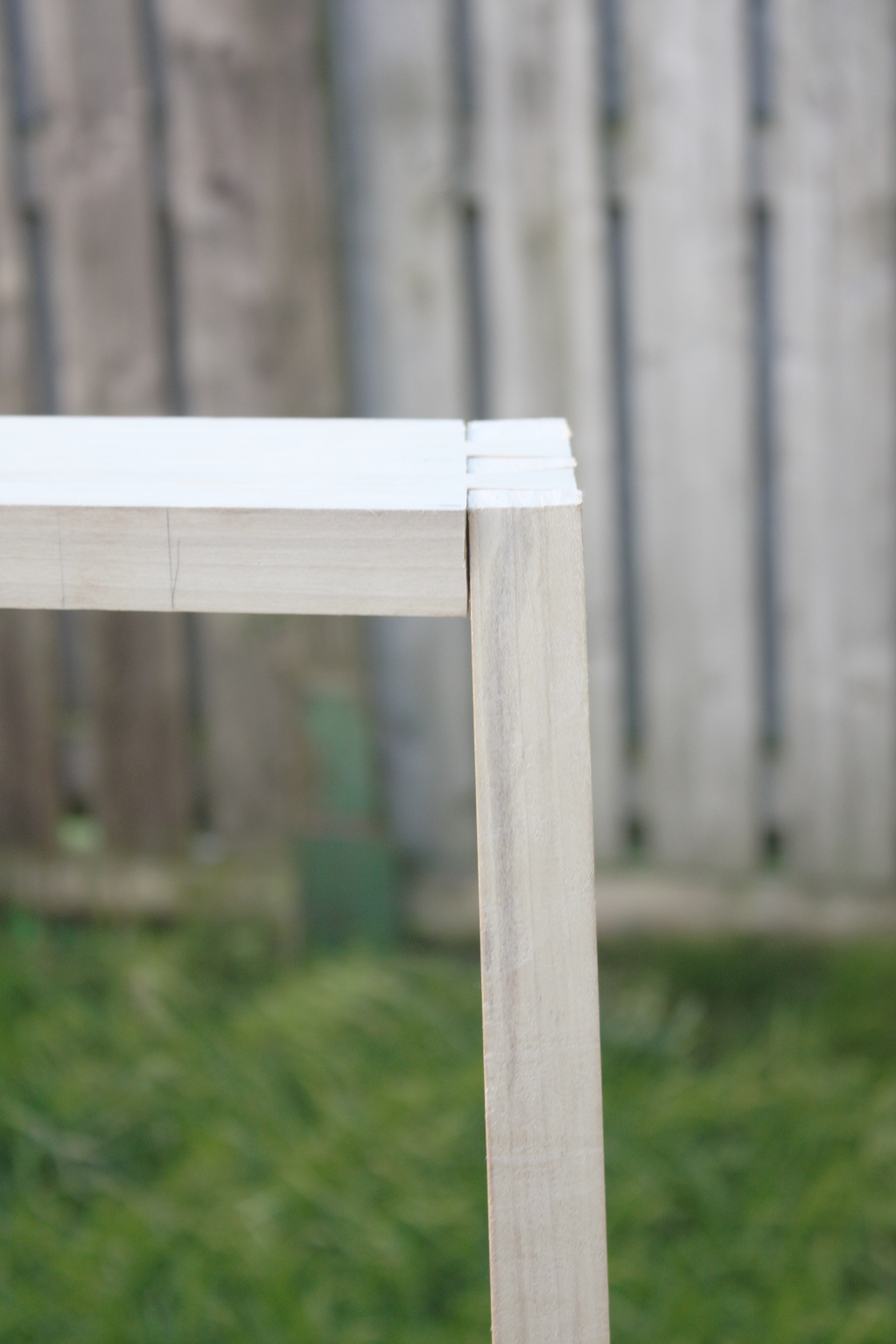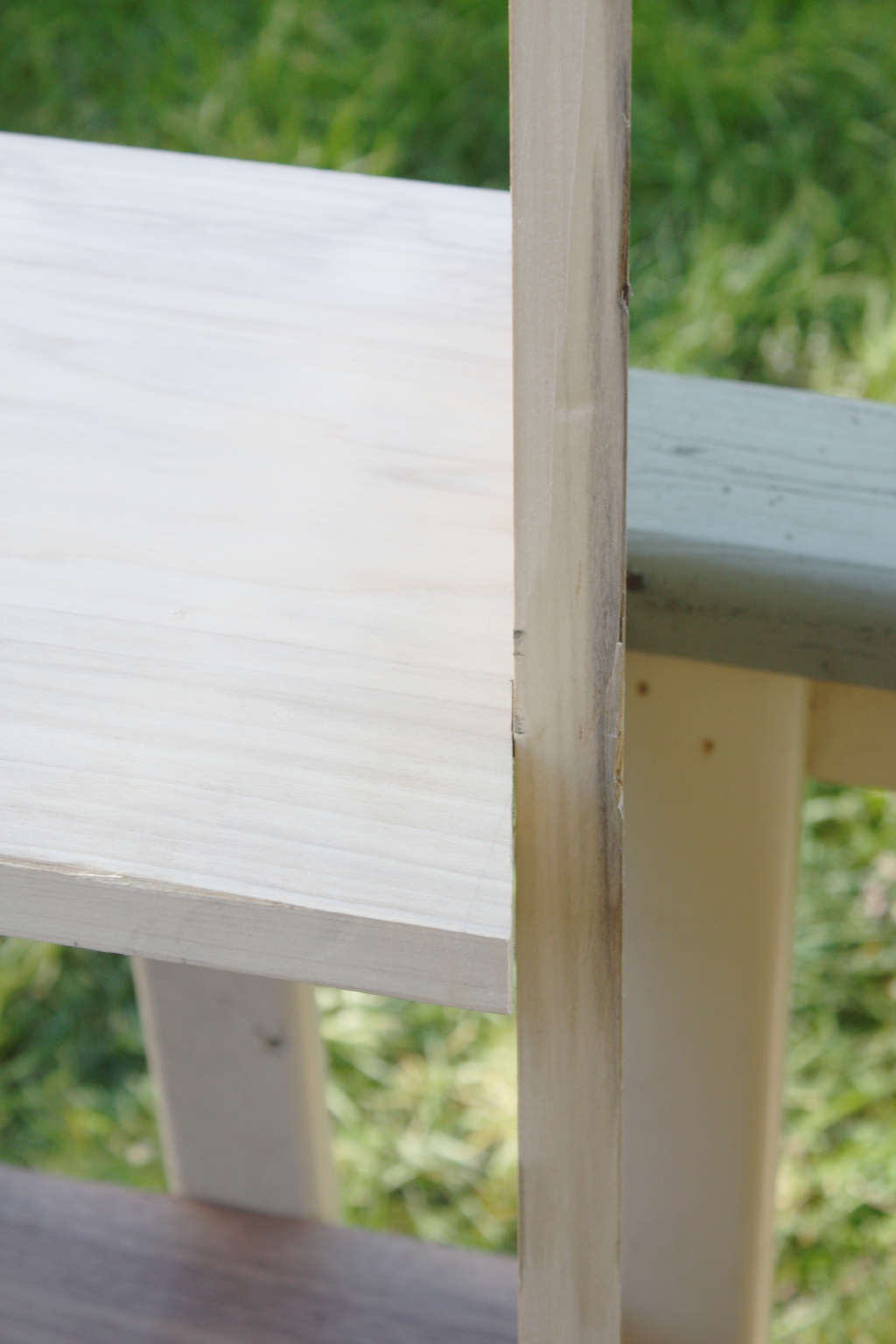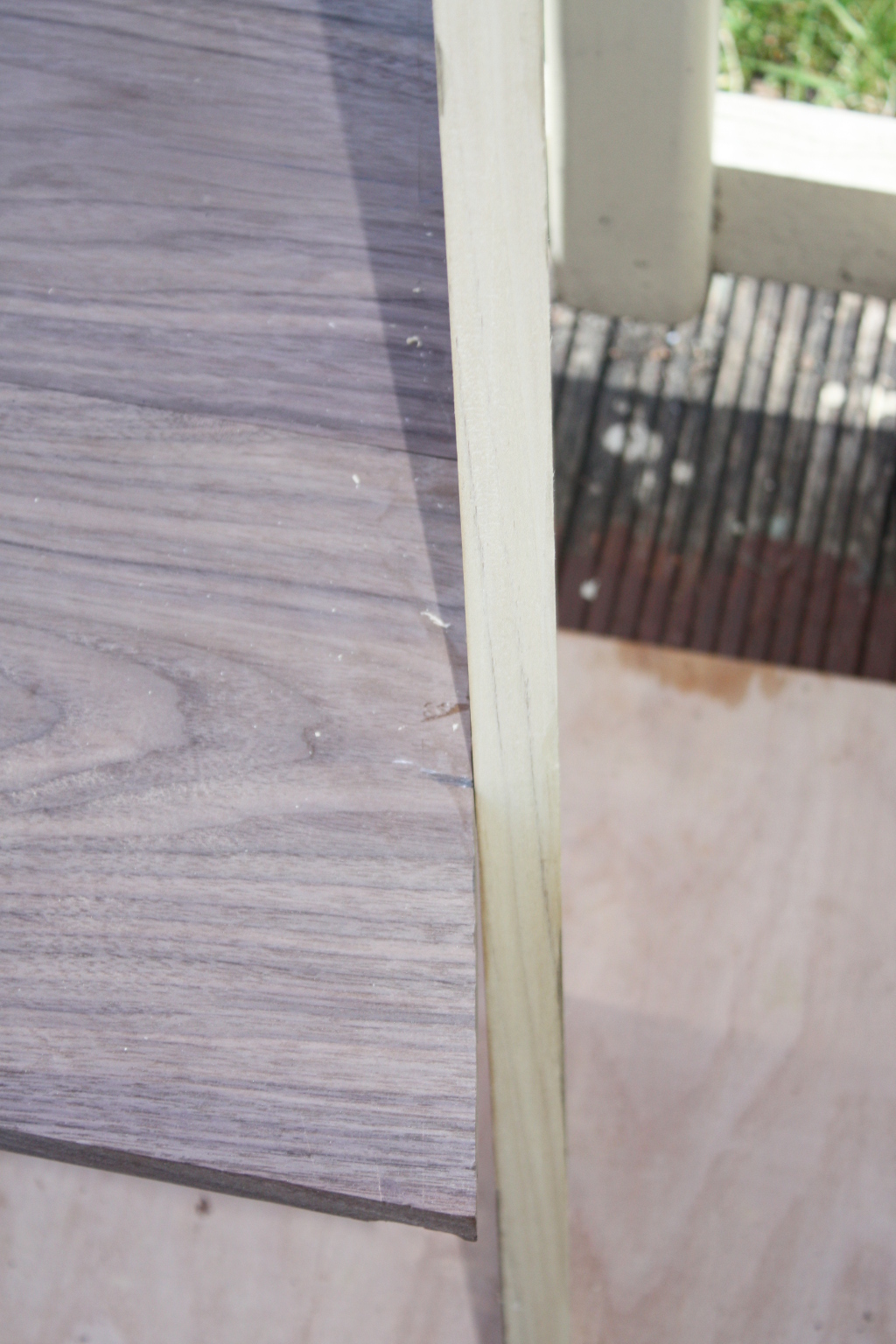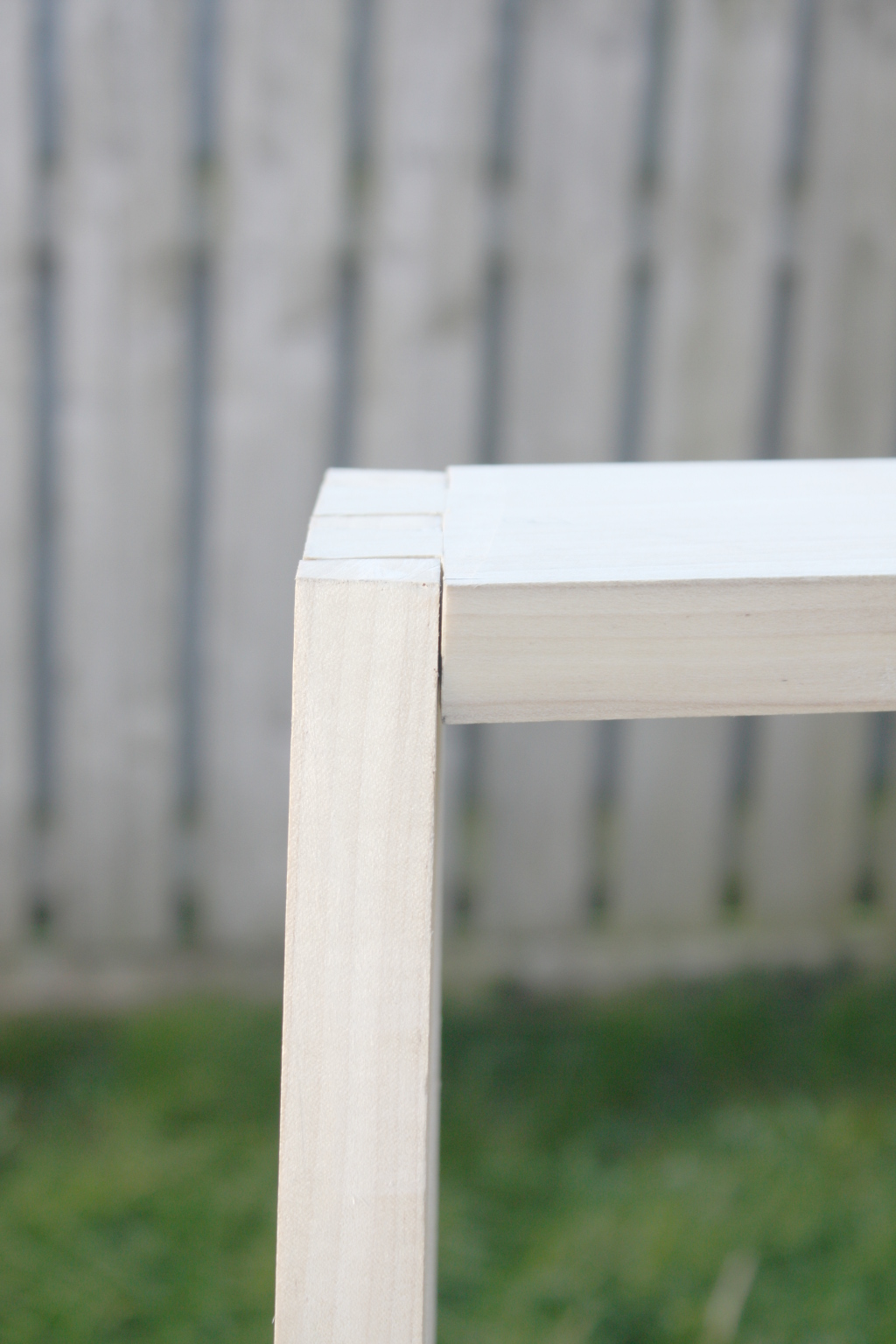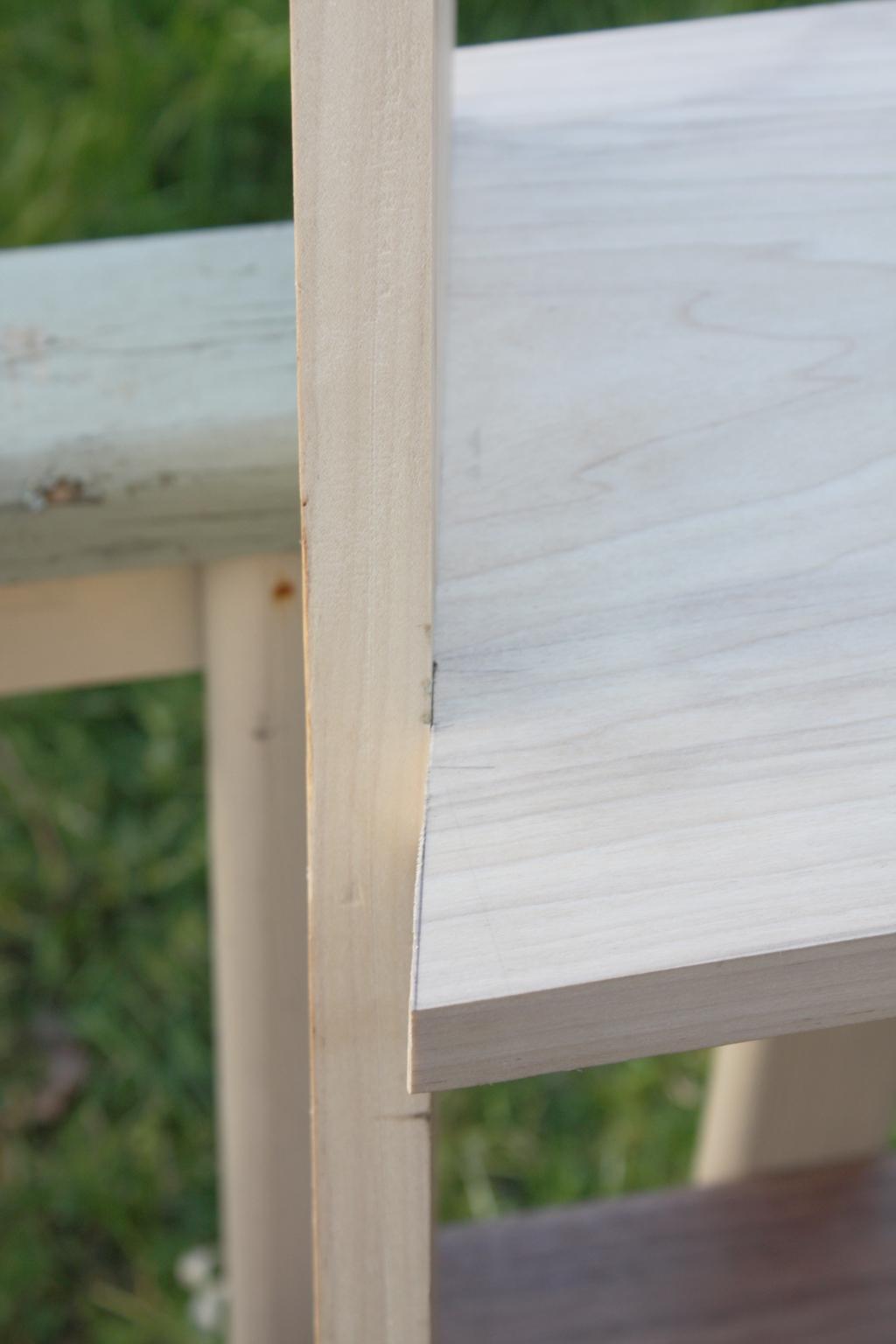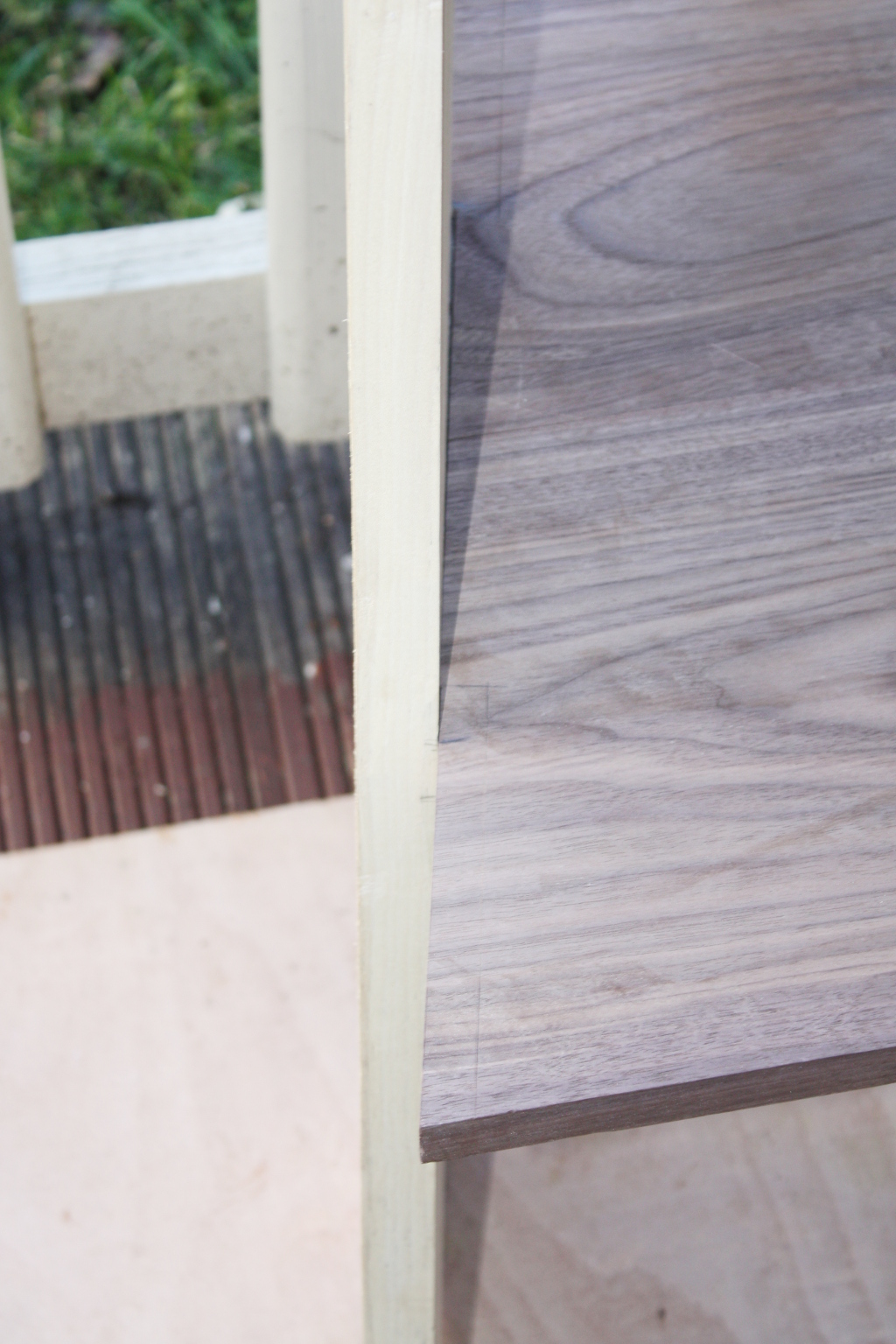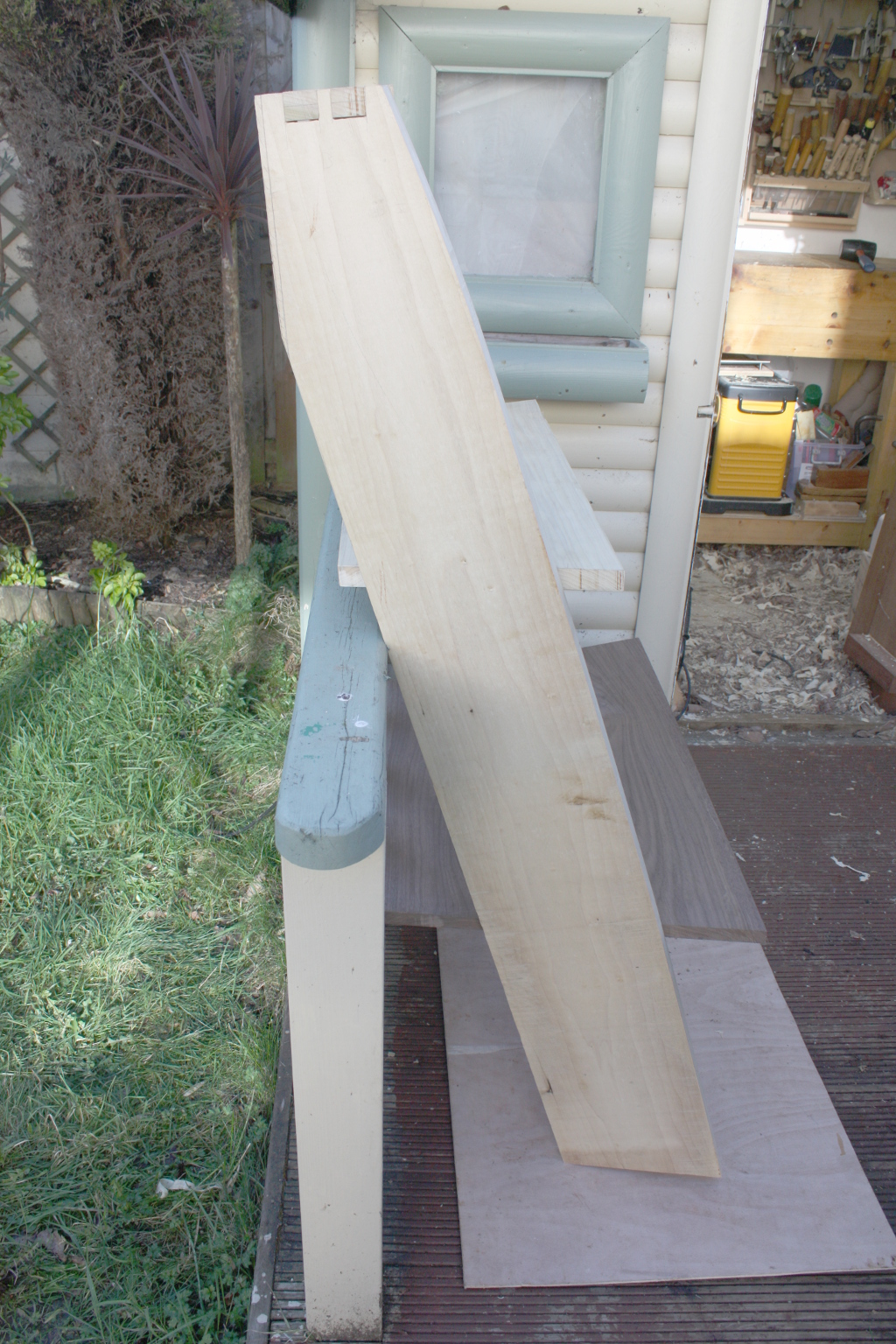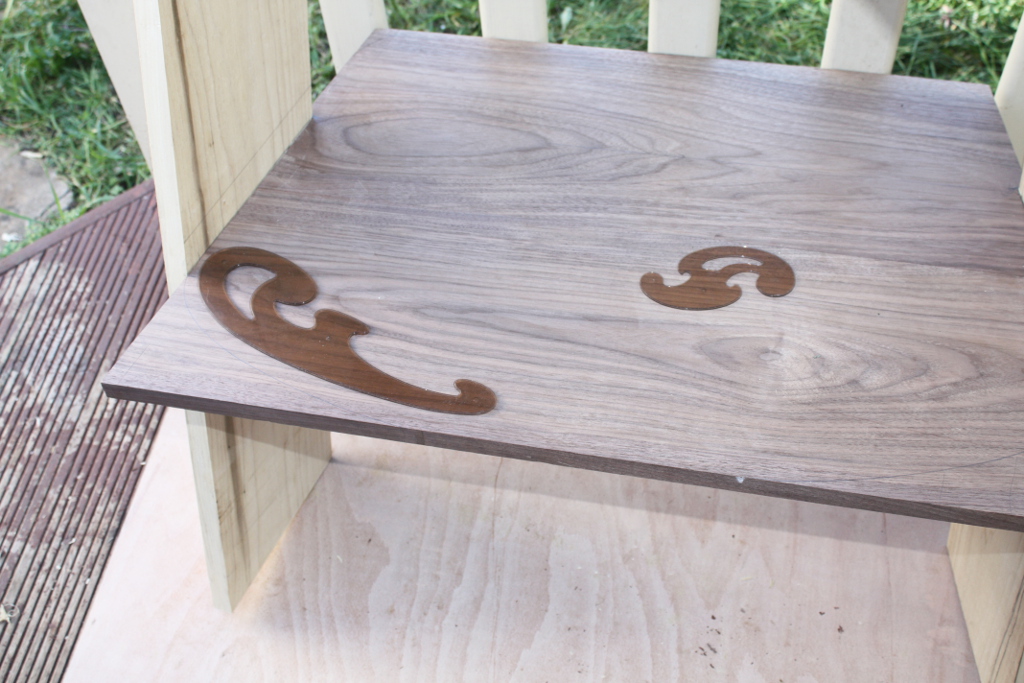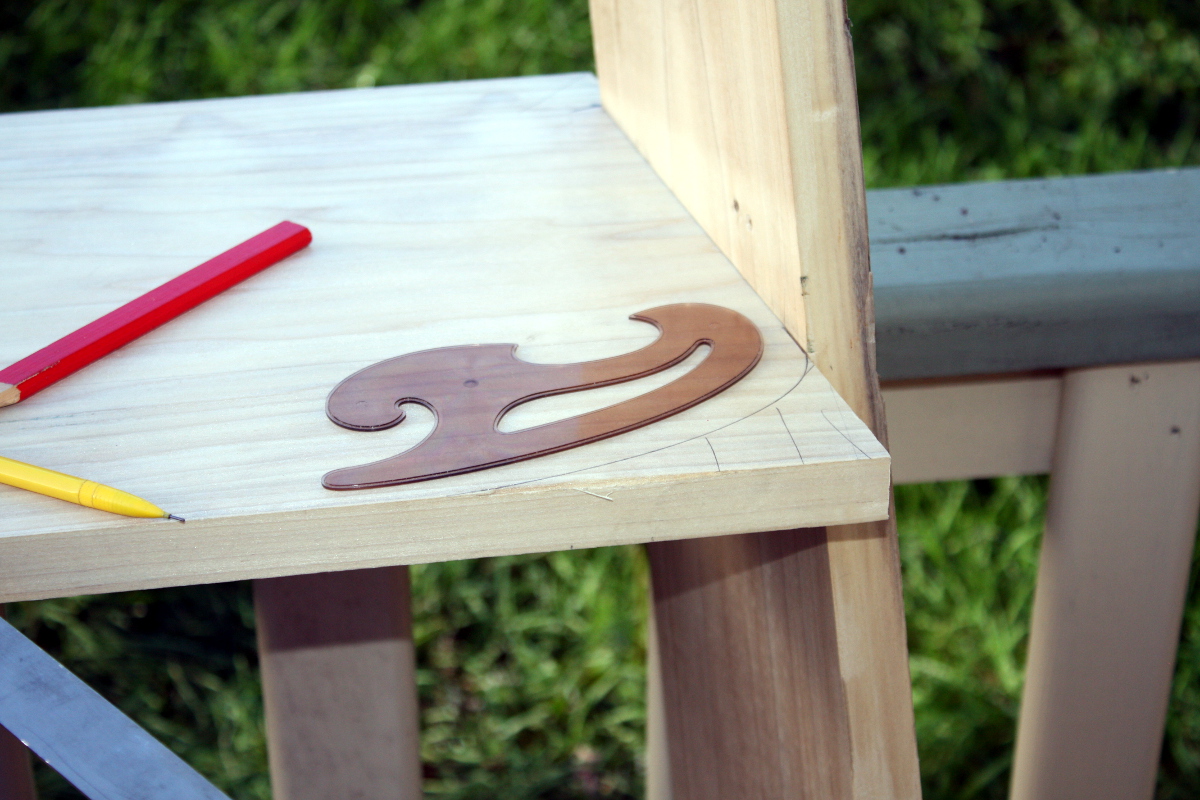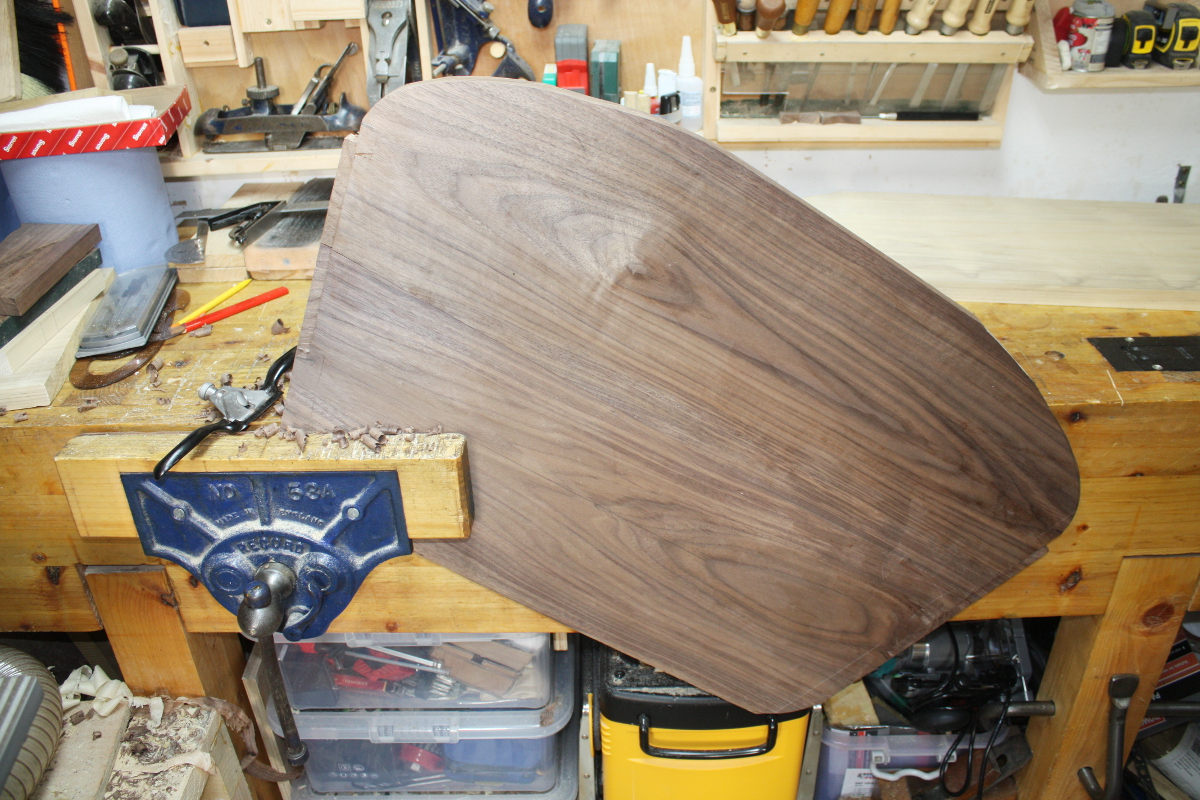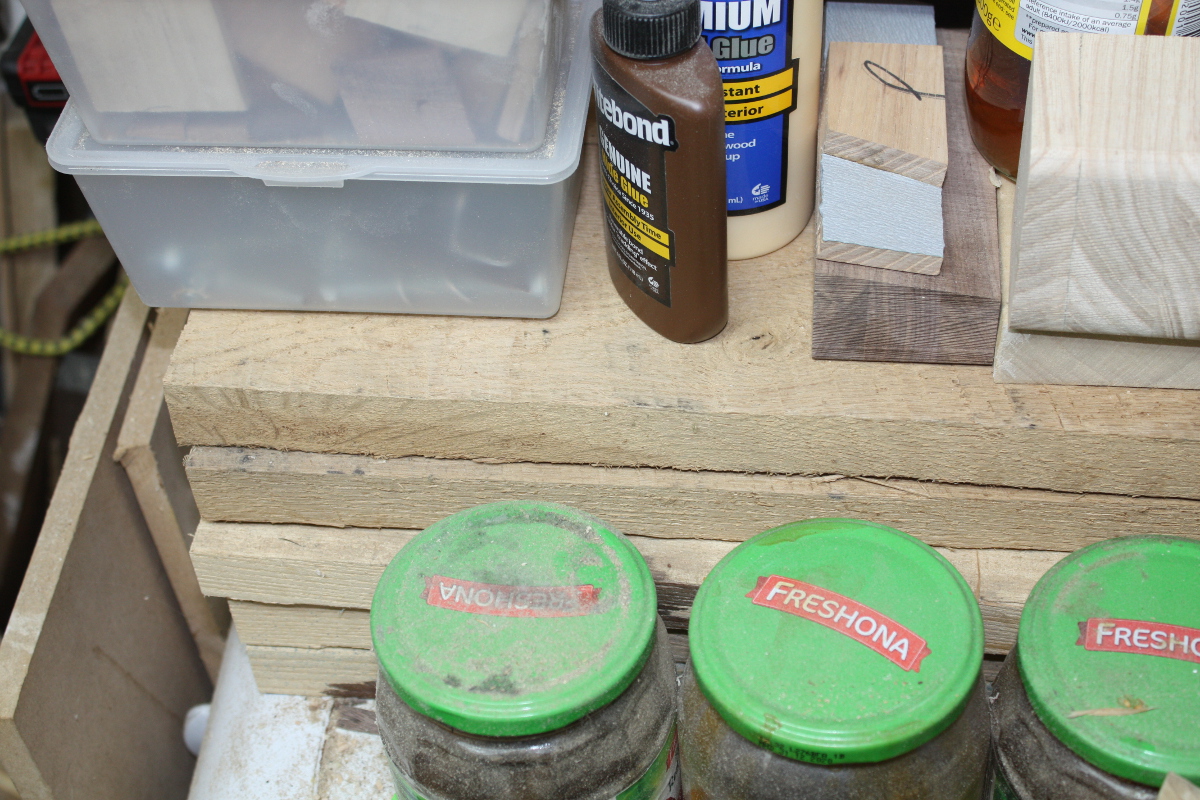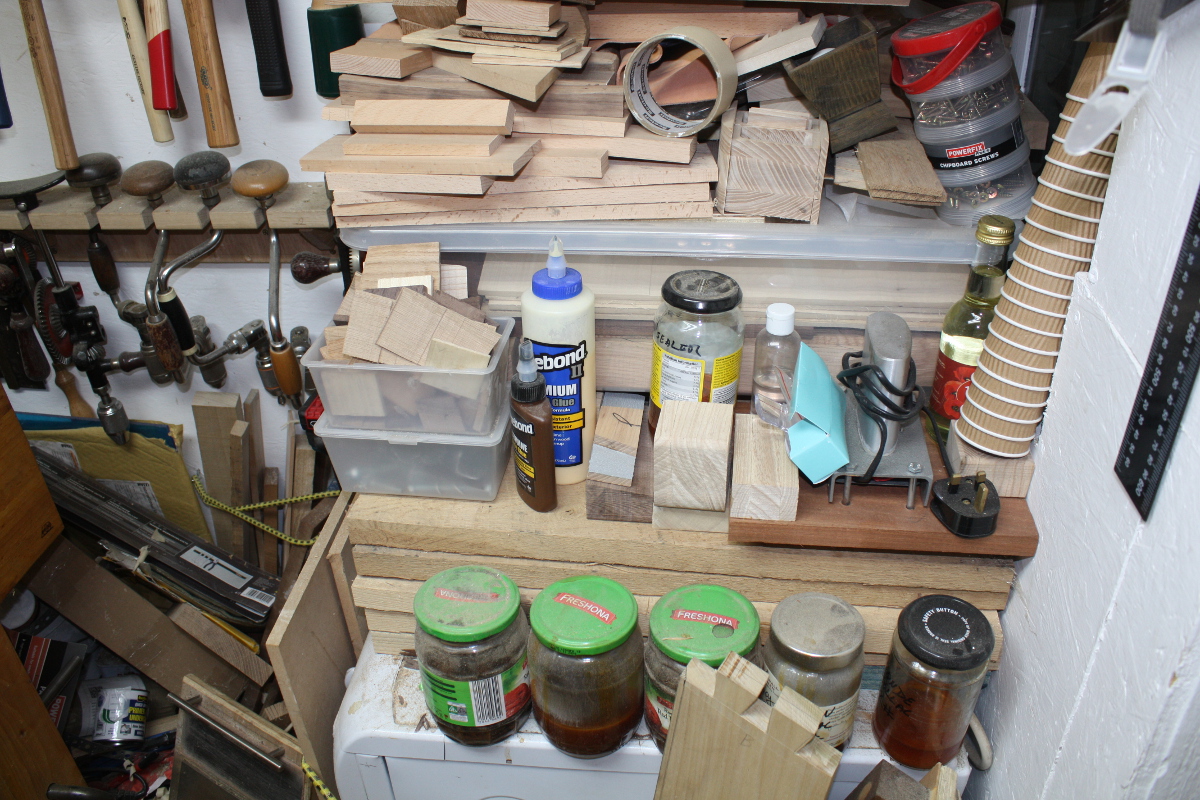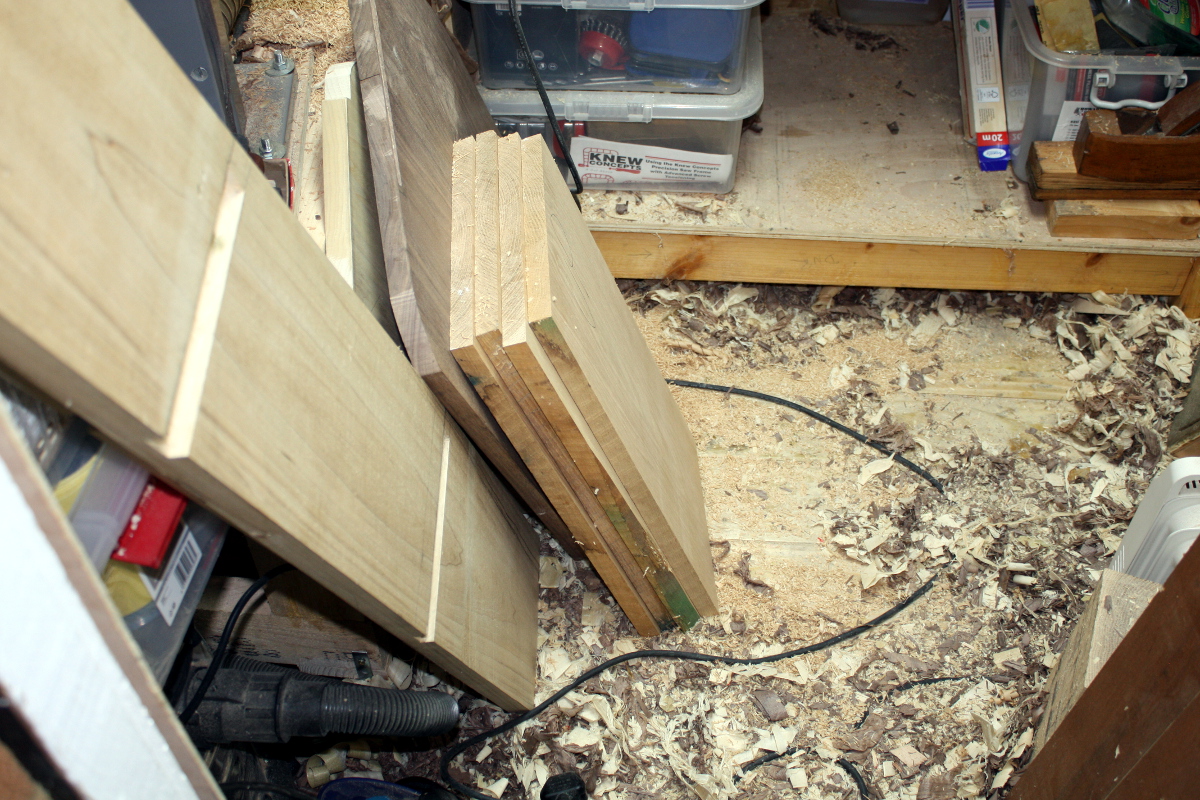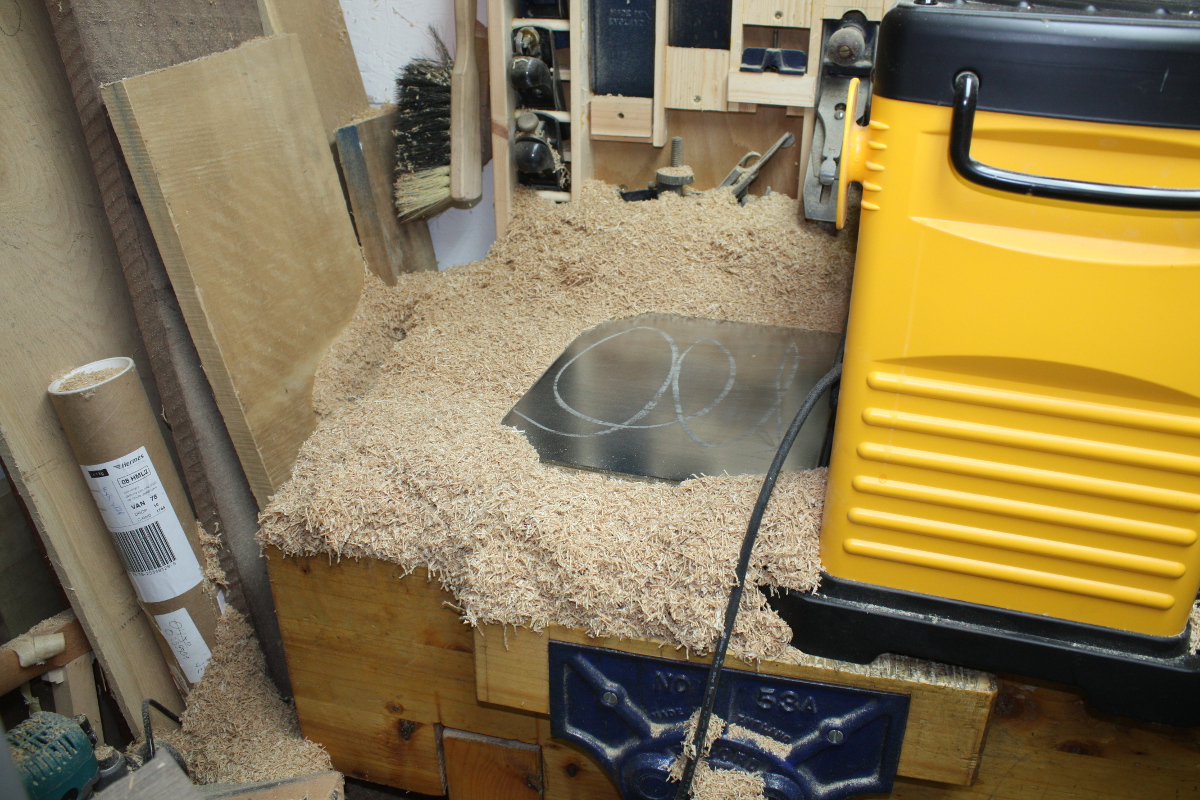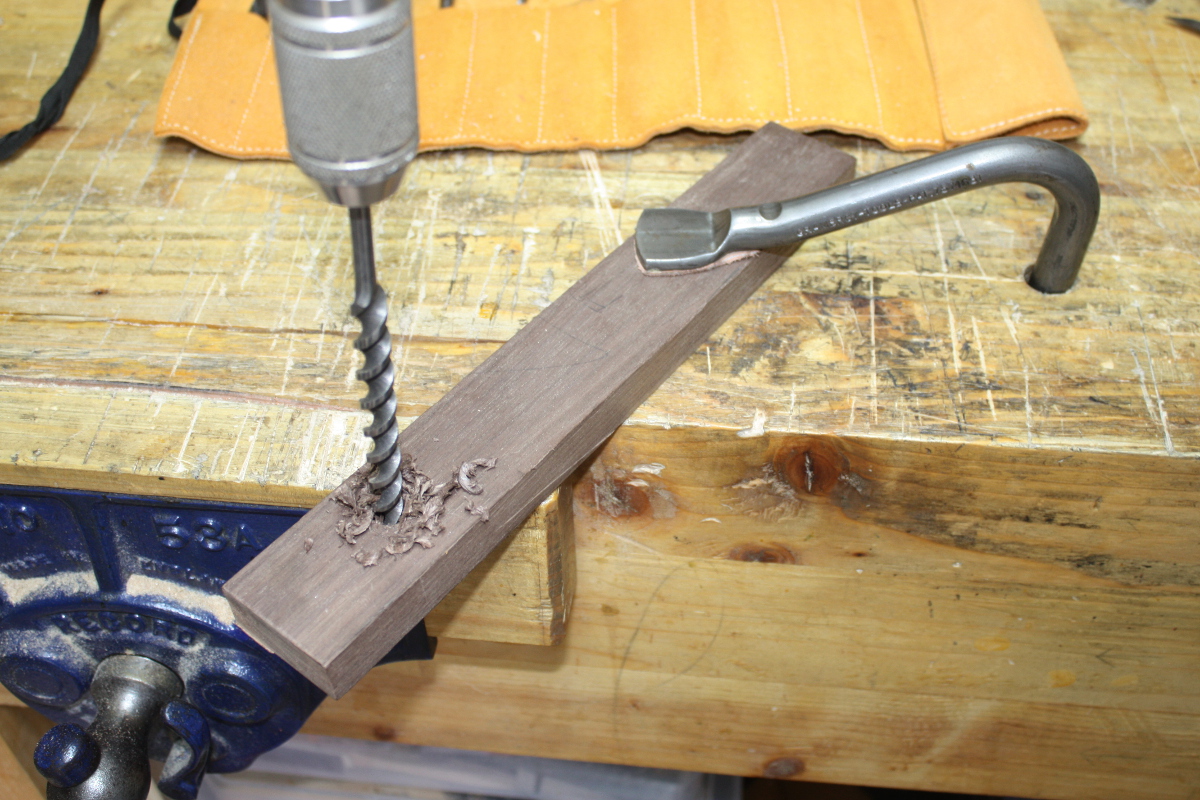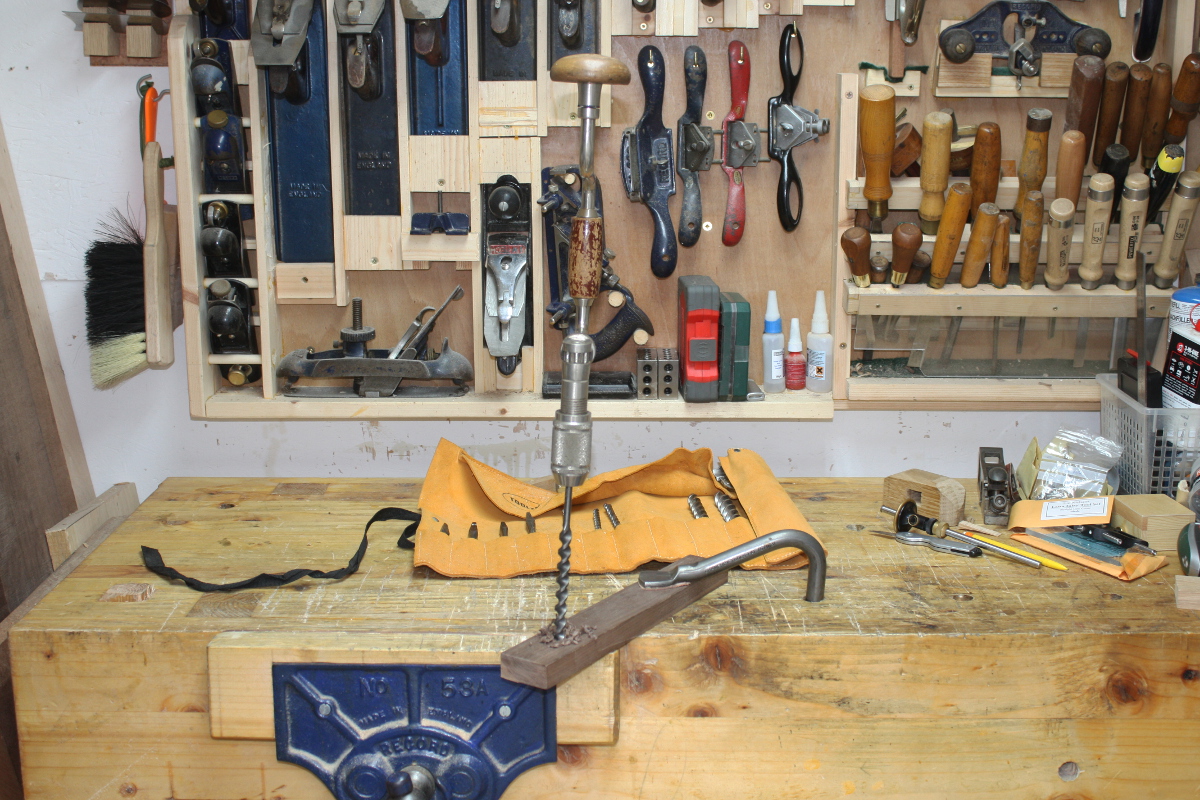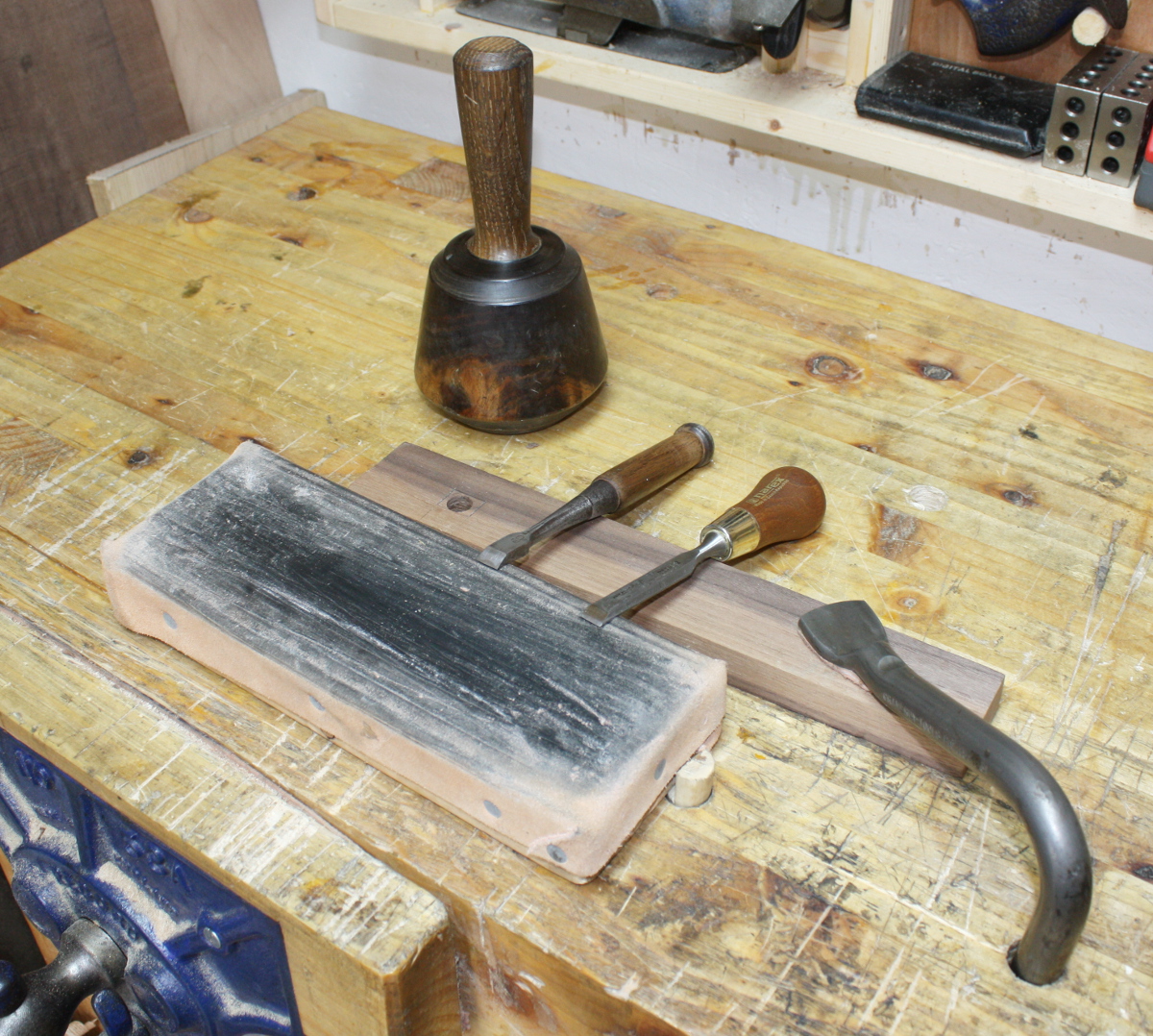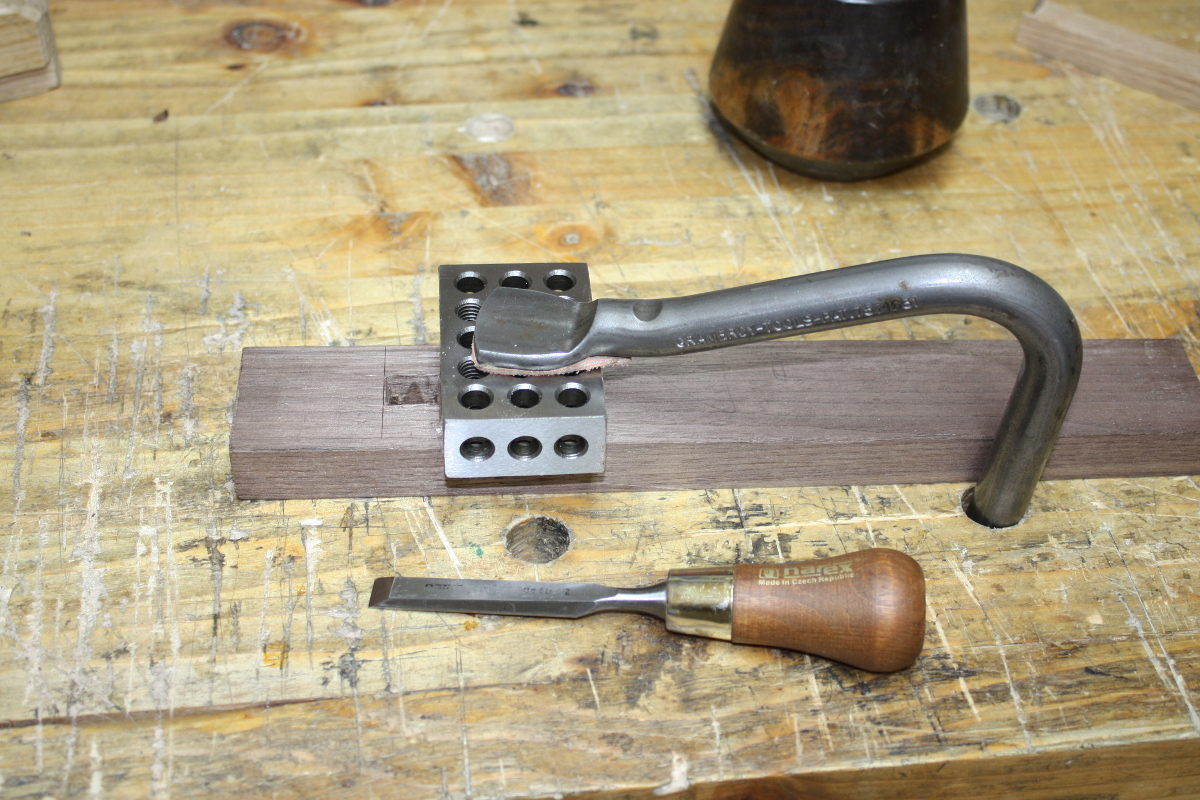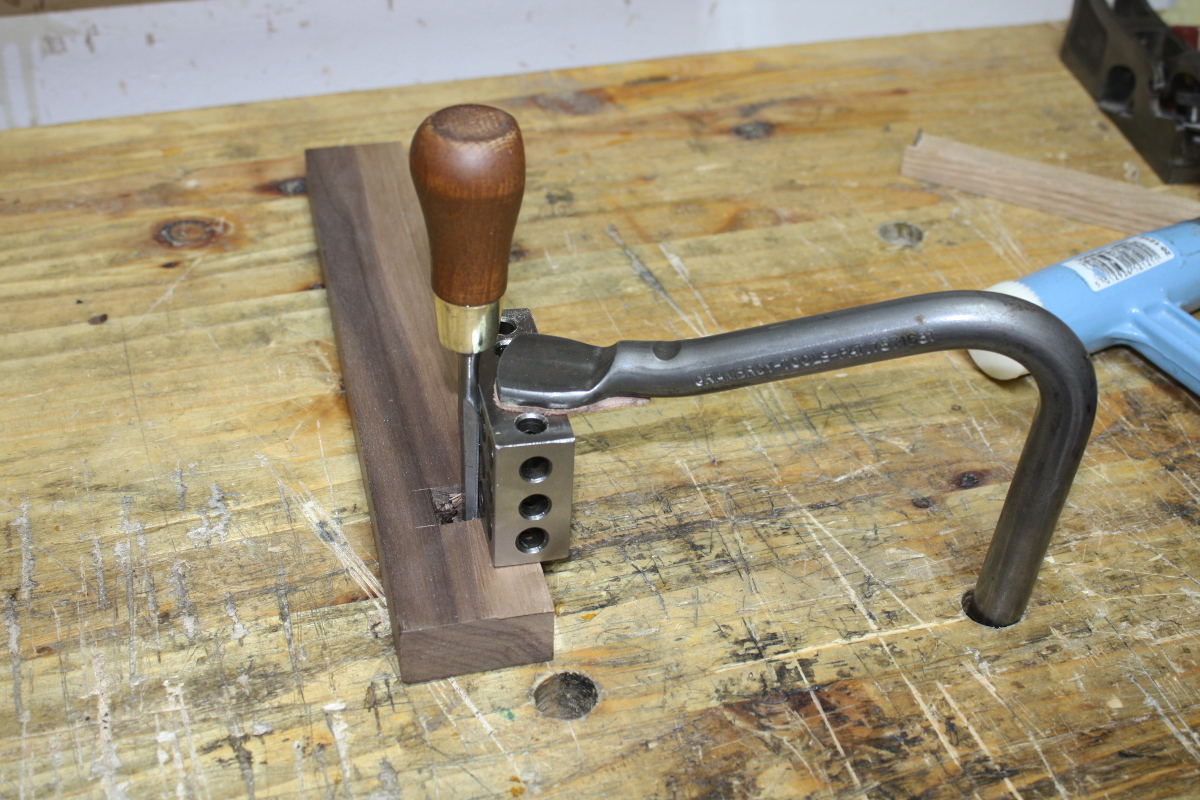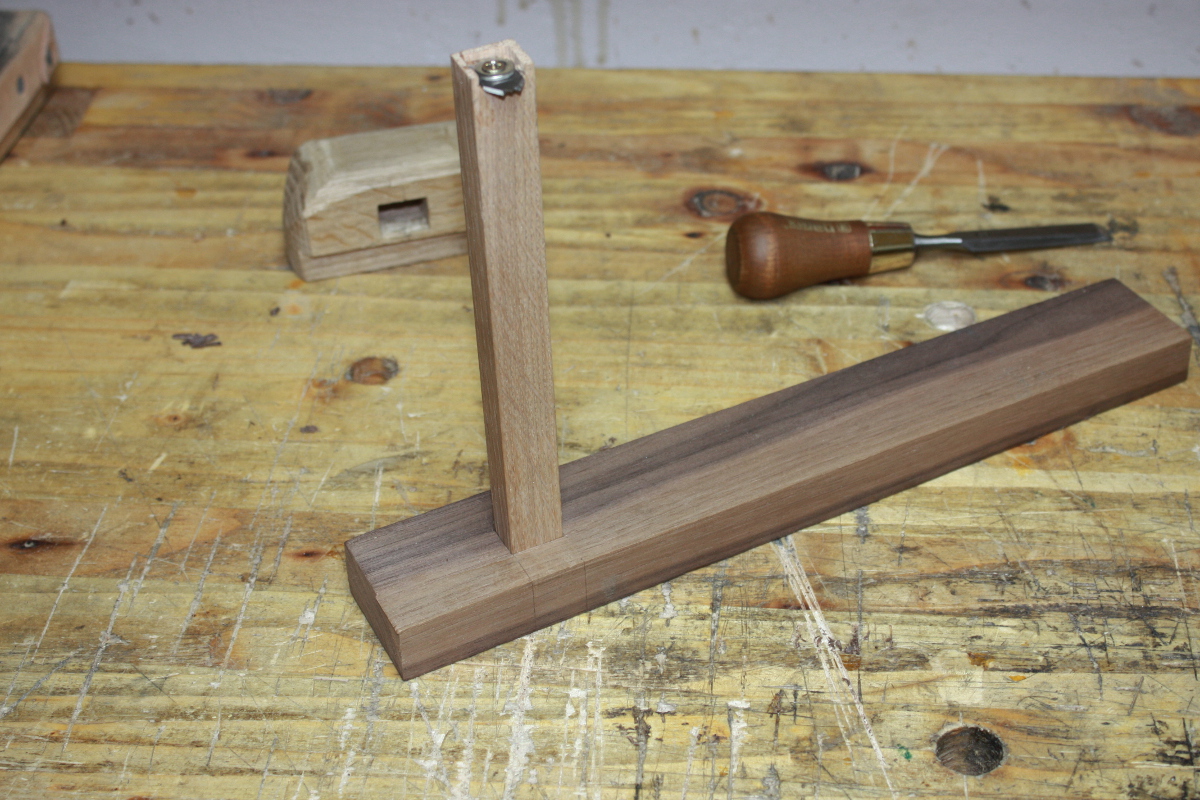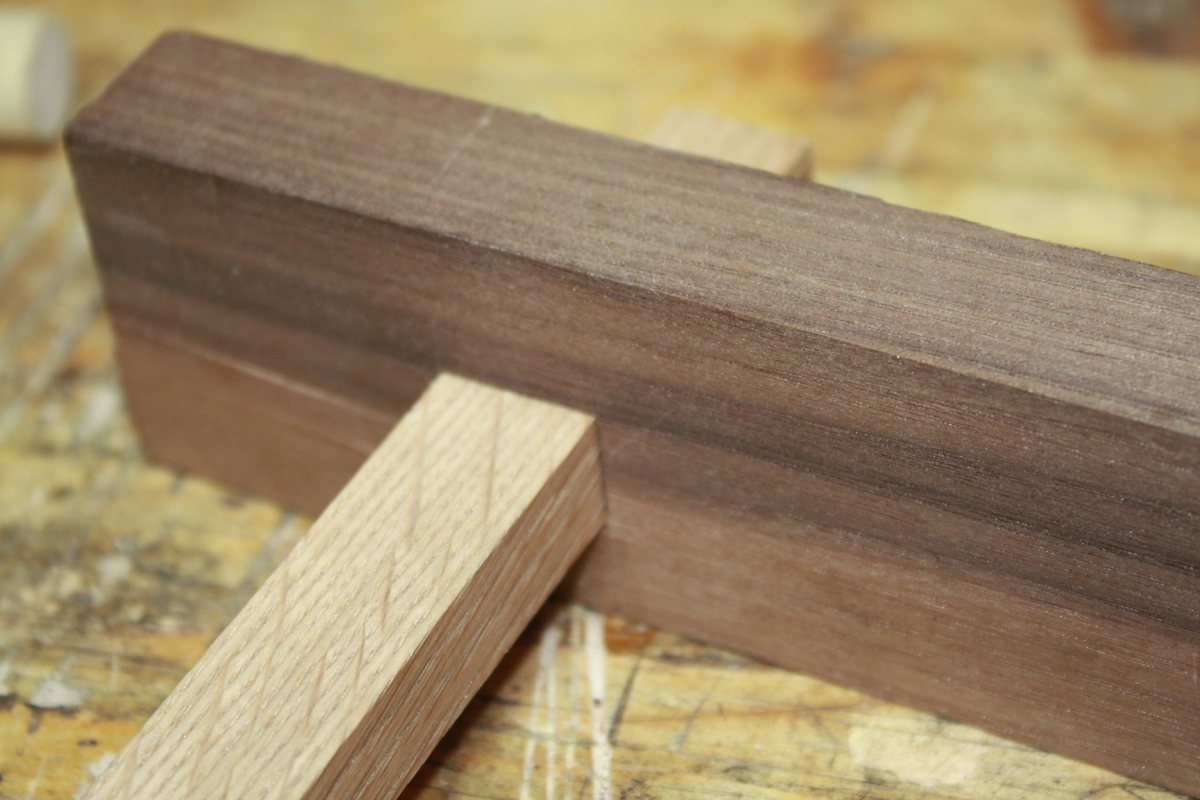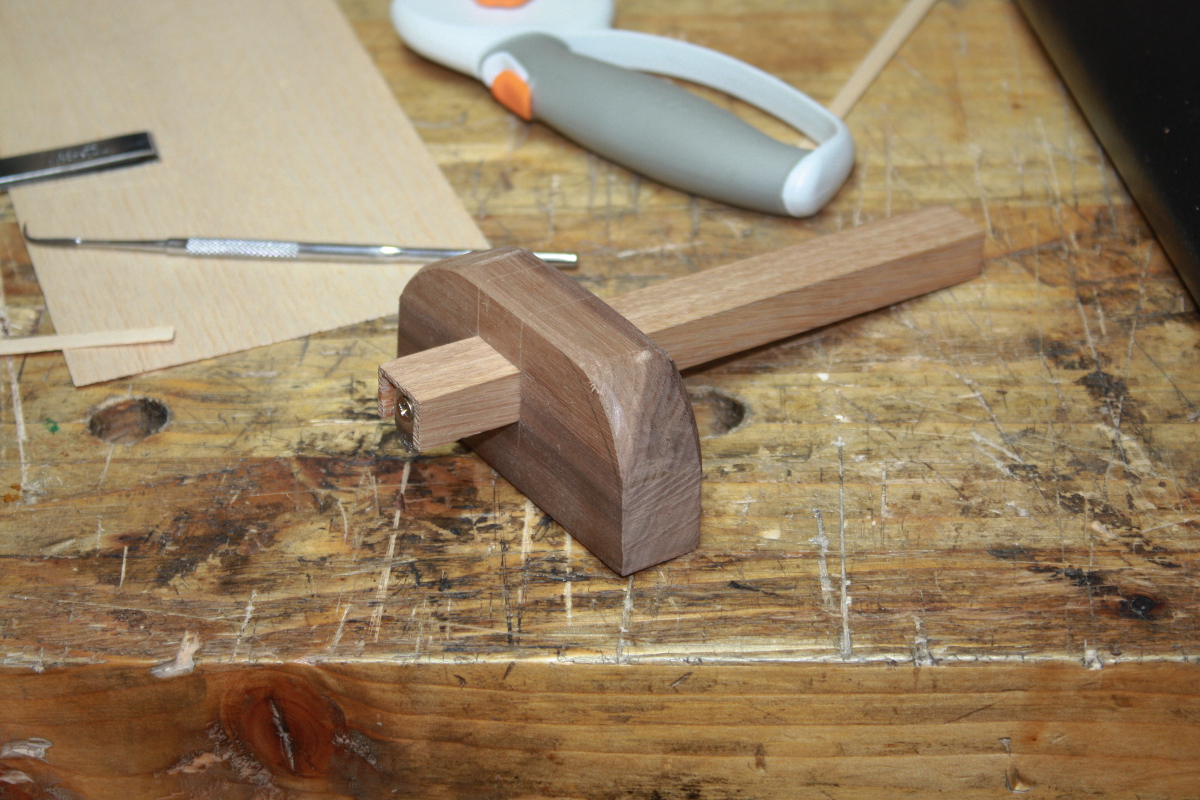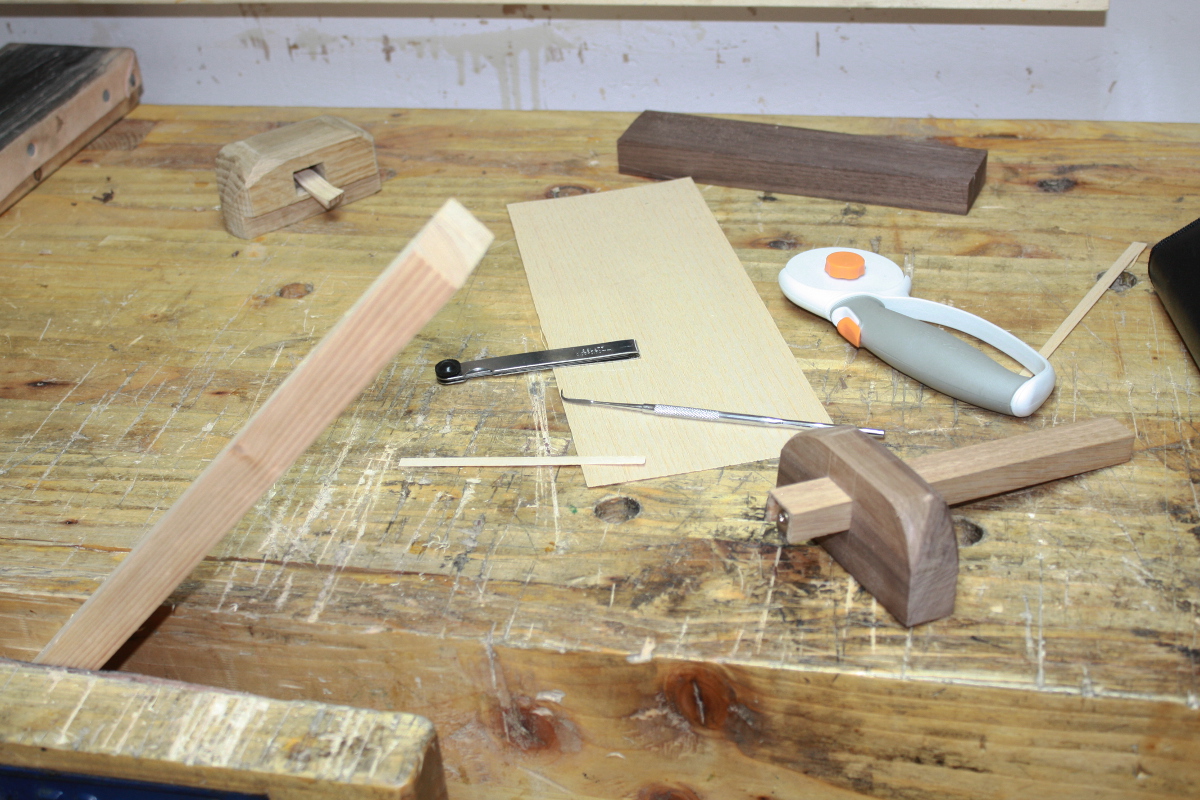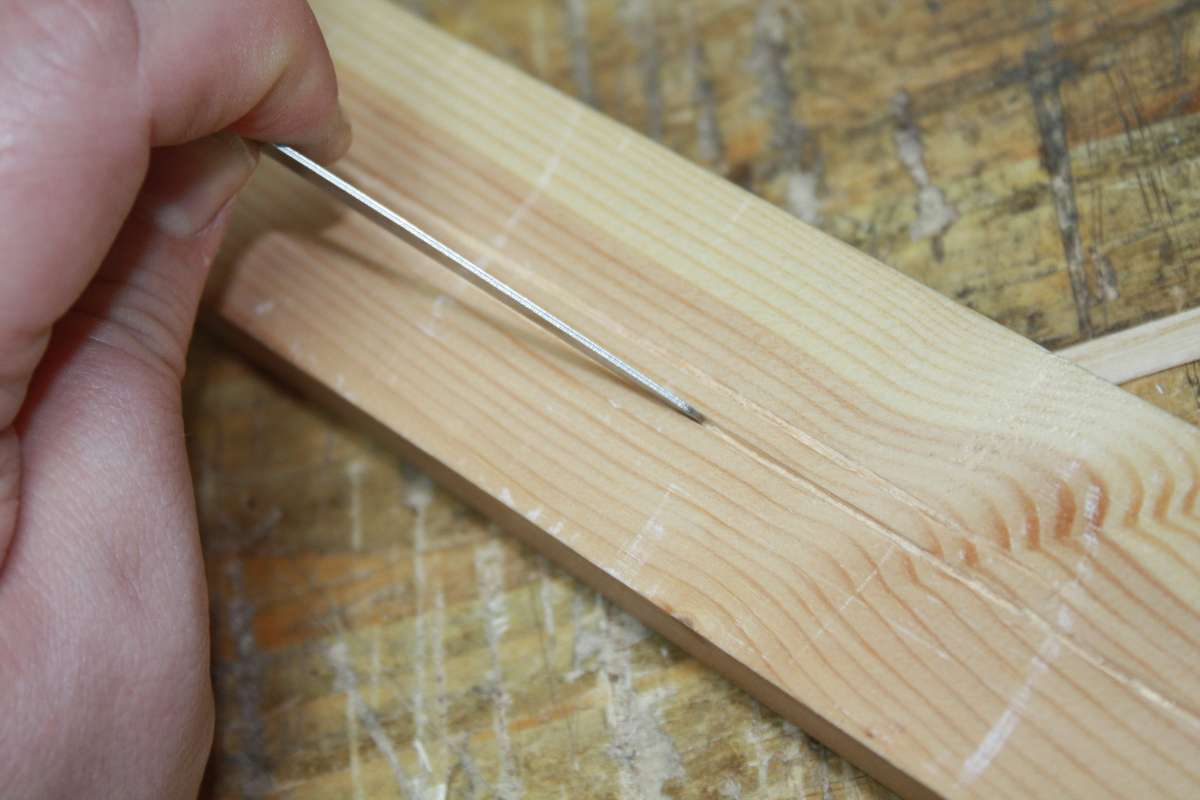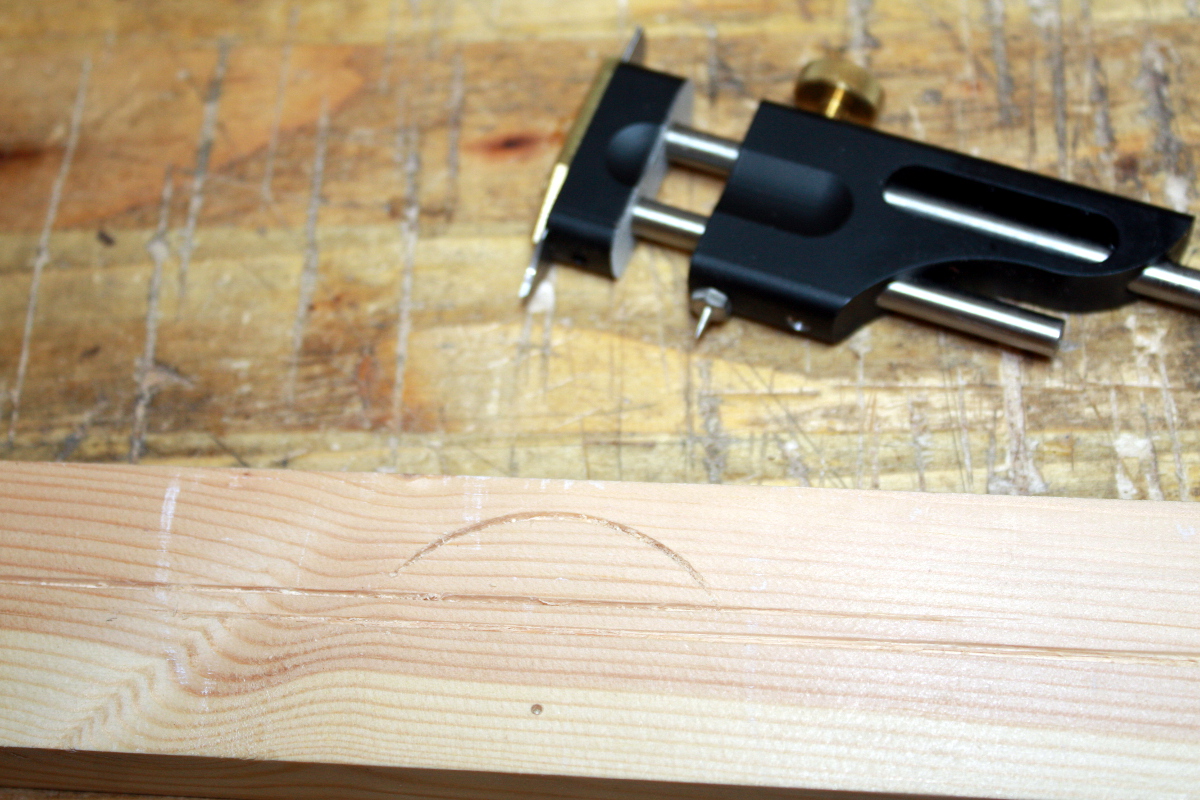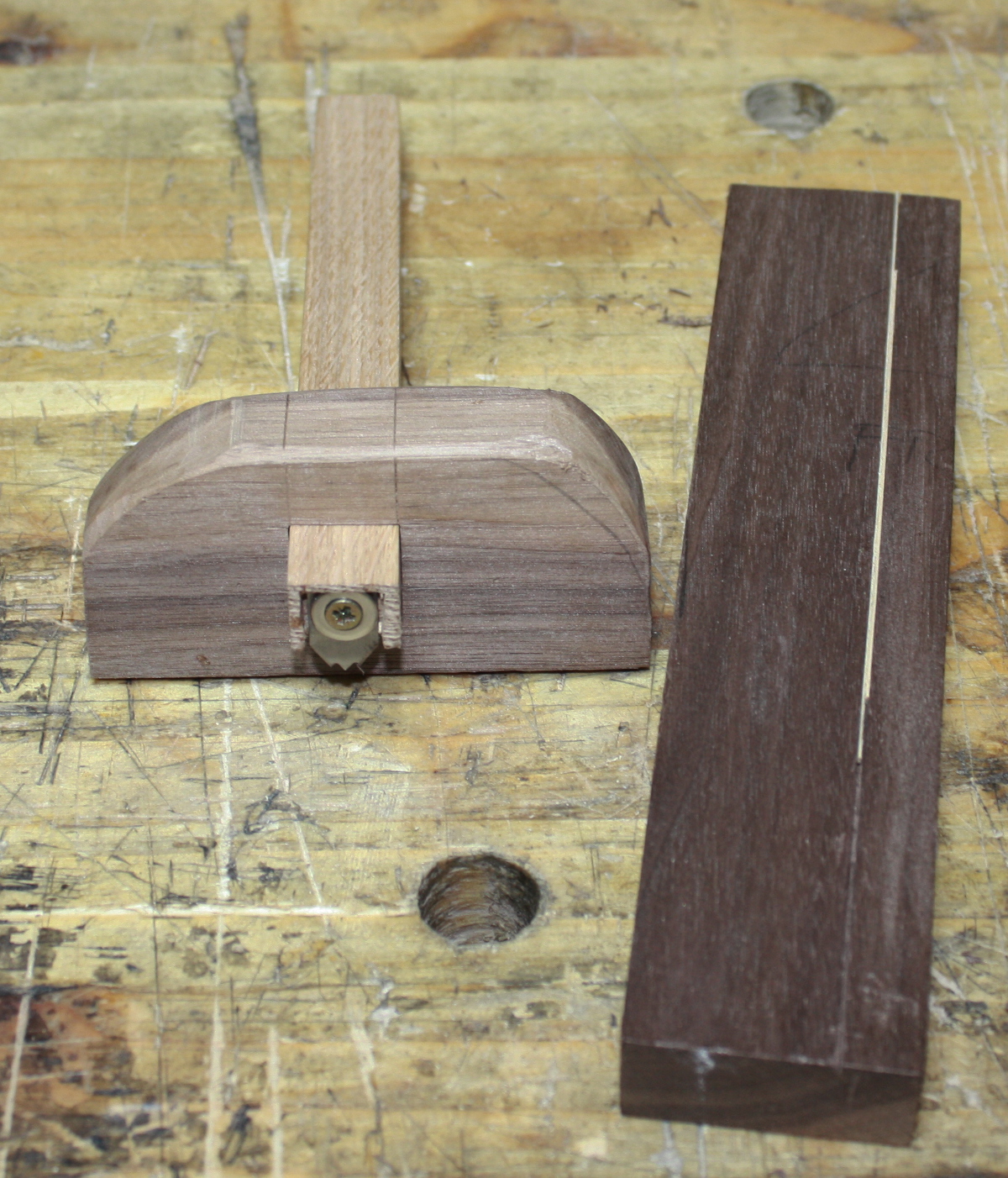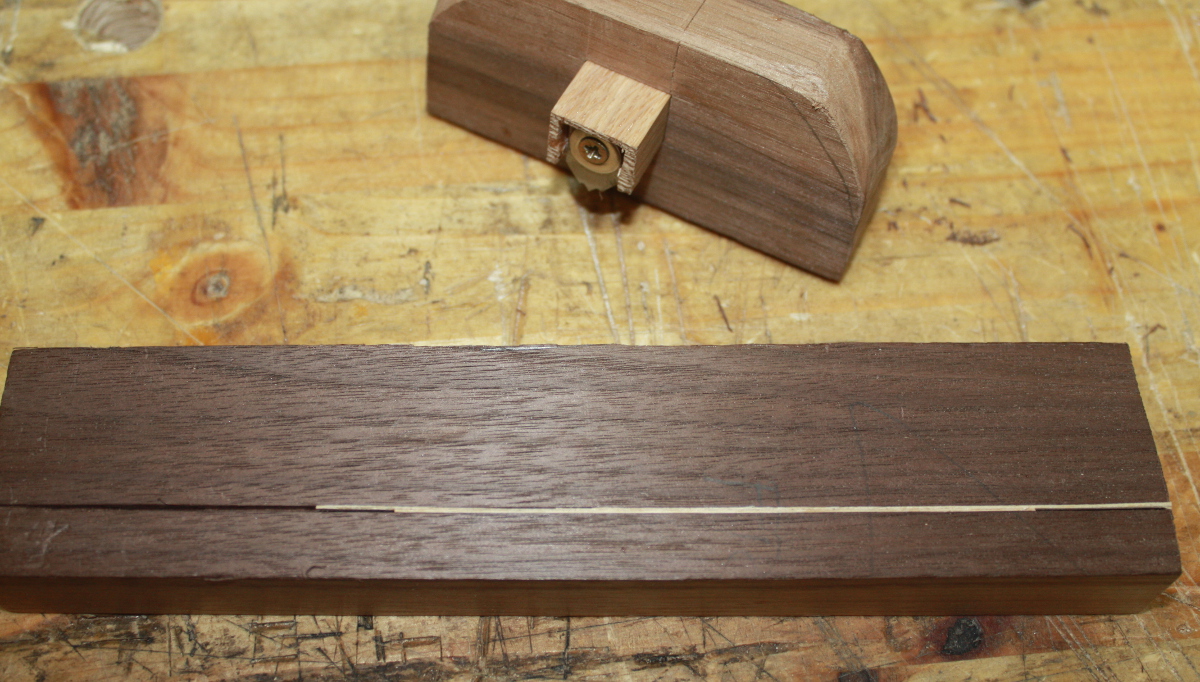So the resin tests came out pretty damn good. The idea of putting the reflector under the resin worked quite well, and most of the colours came out well (the crimson guitars stains didn’t really pop but that was more down to the dark background – the way the red especially looked over the reflector suggests it’d be lovely over poplar).
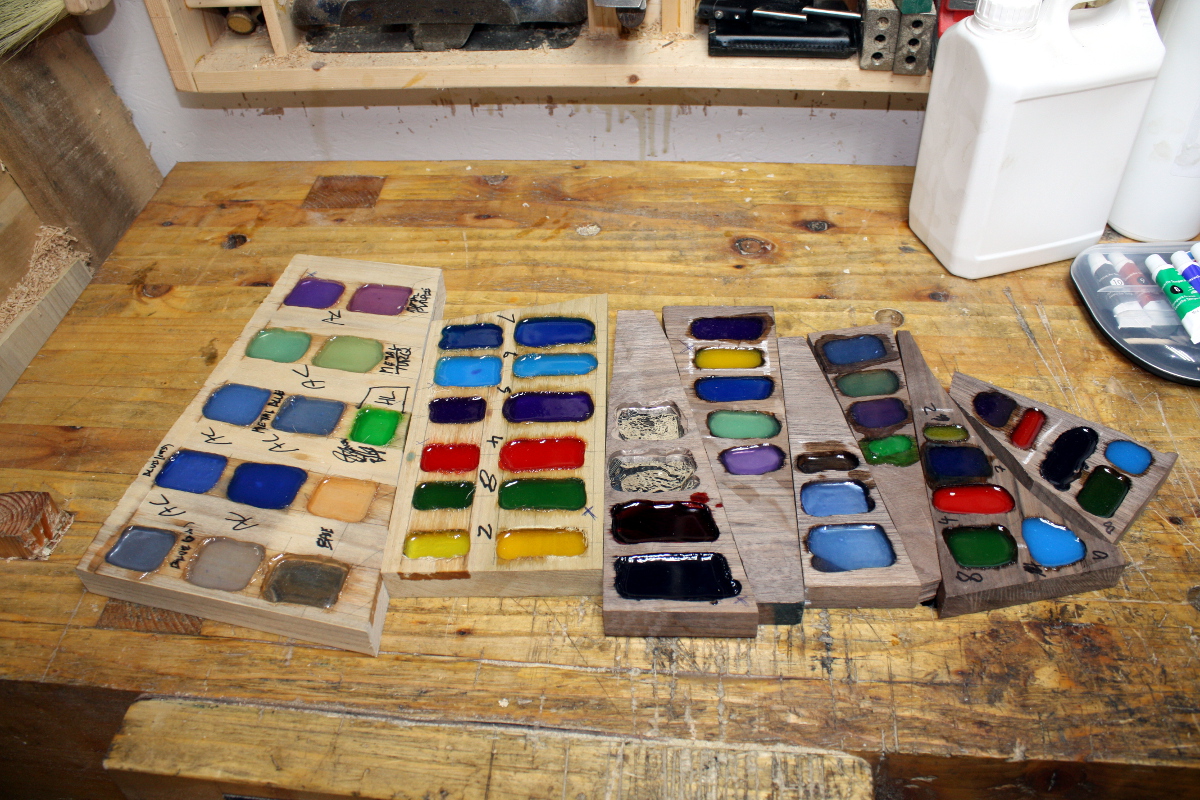
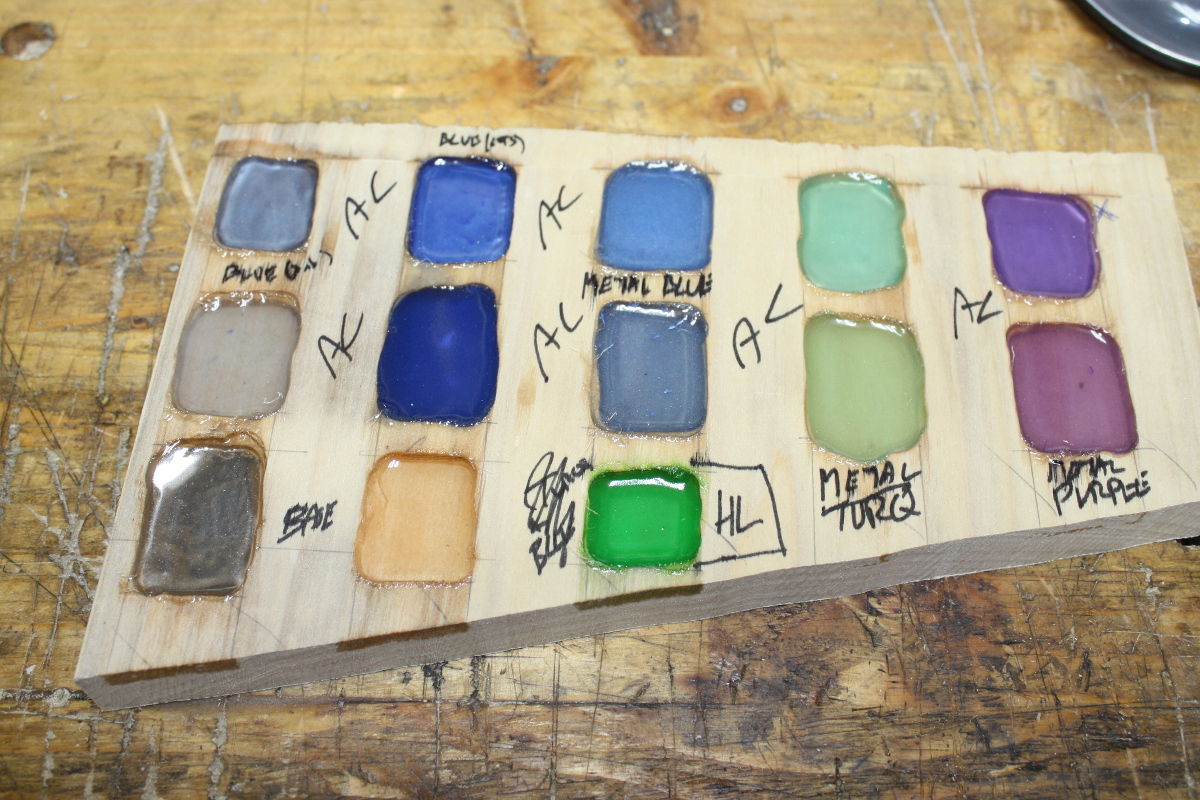
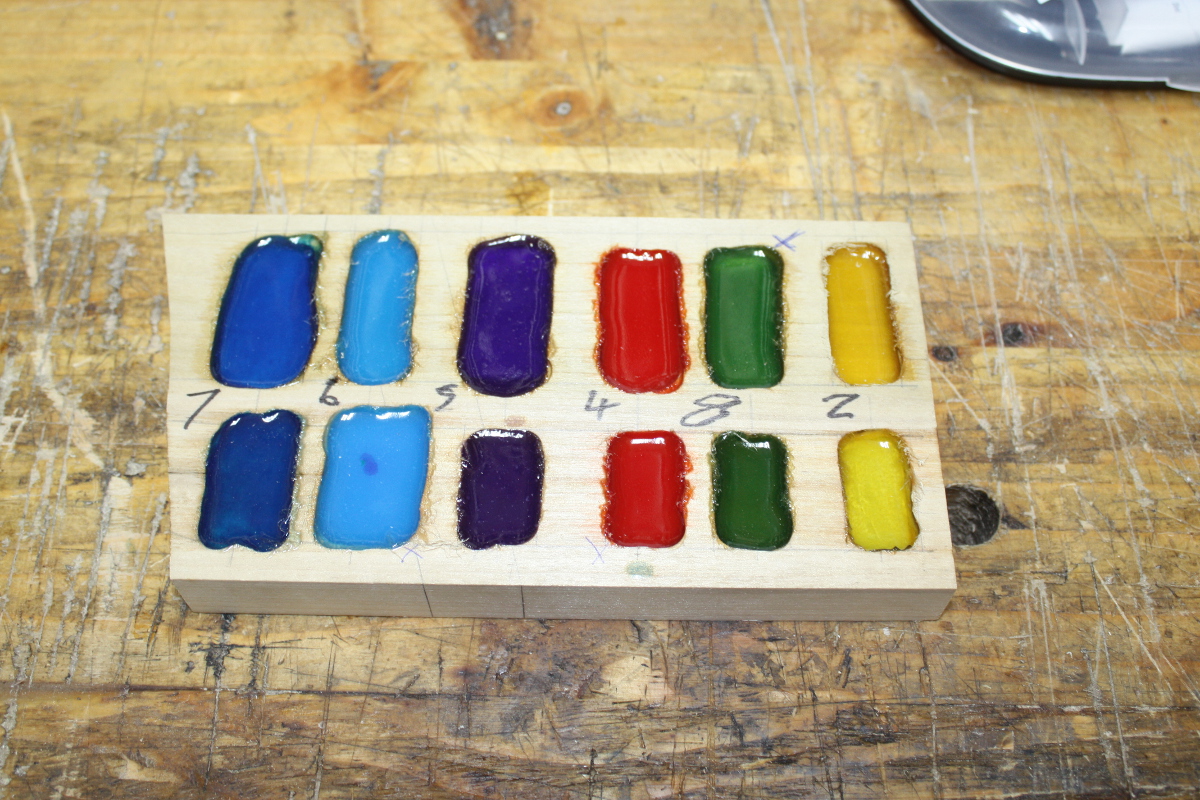
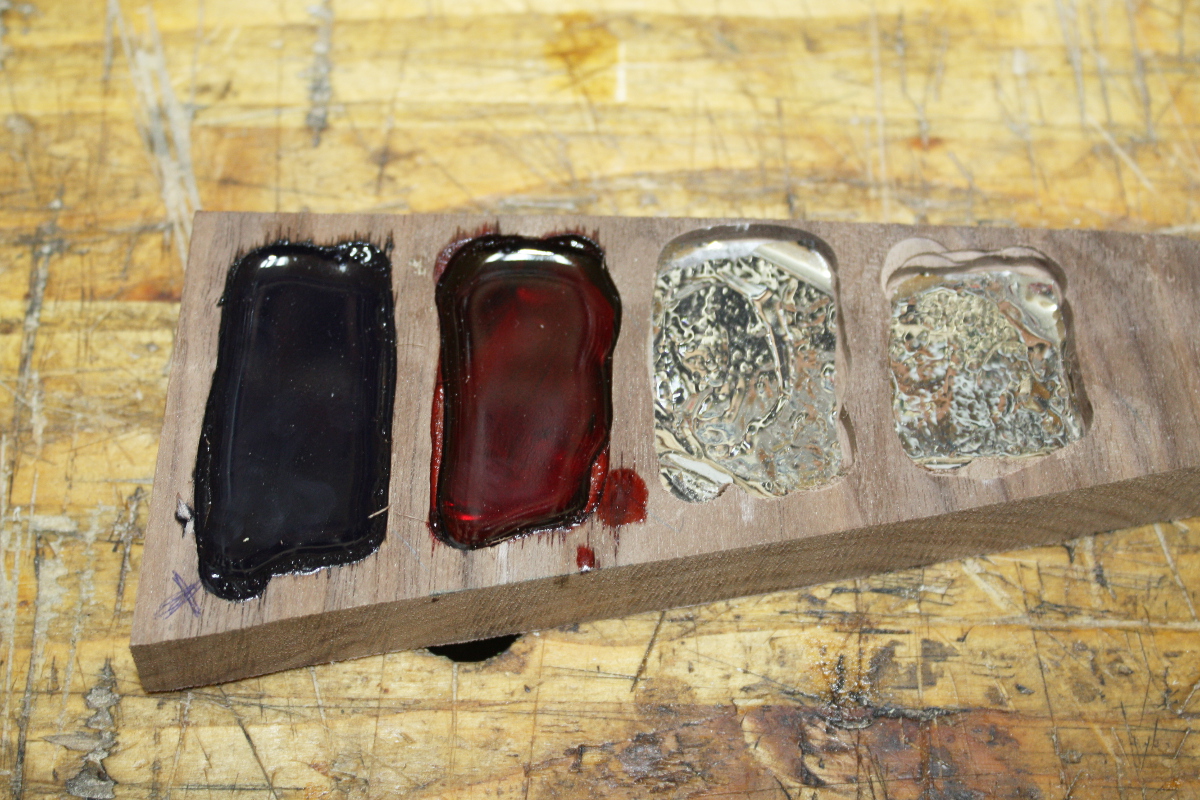
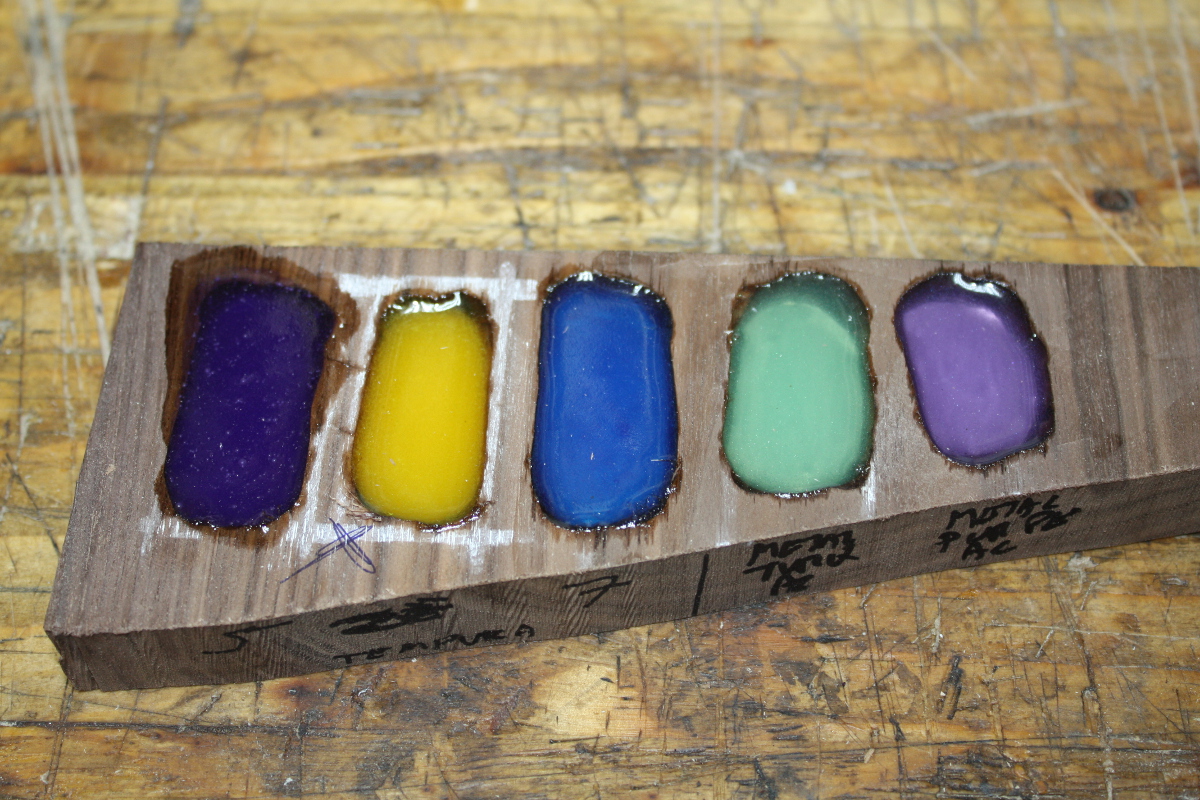
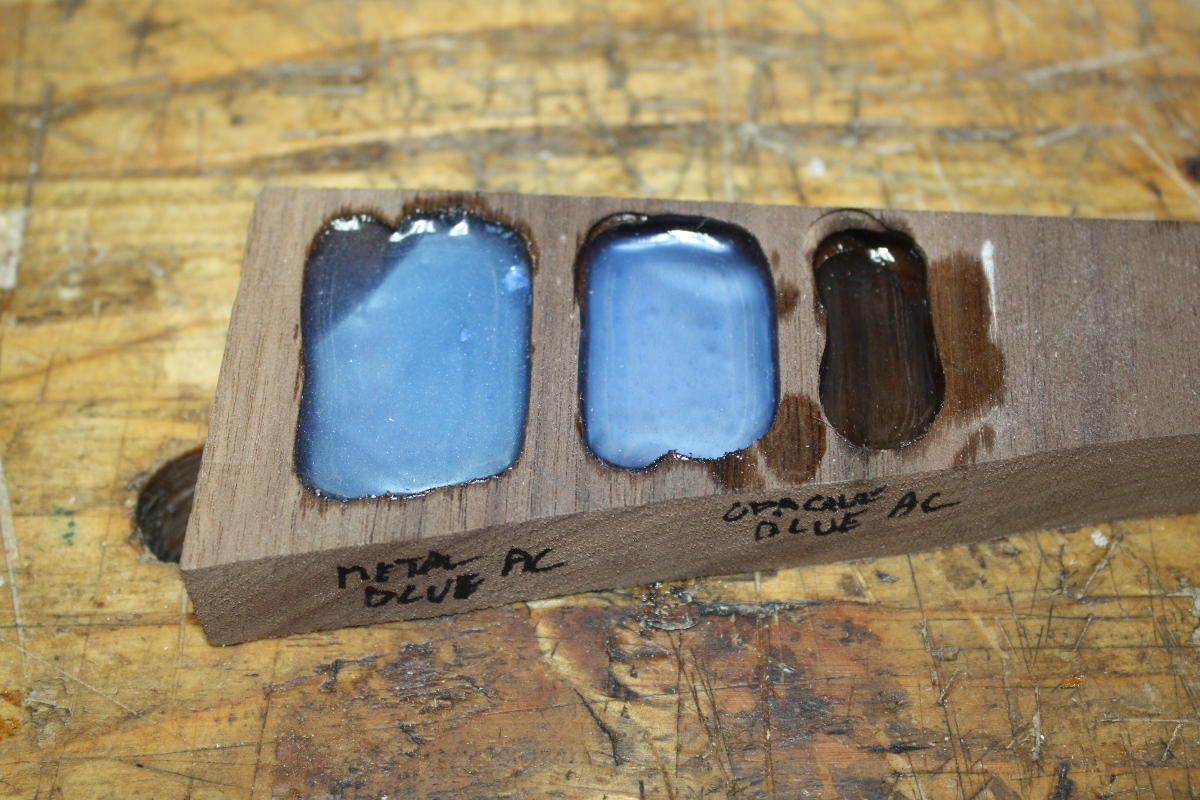
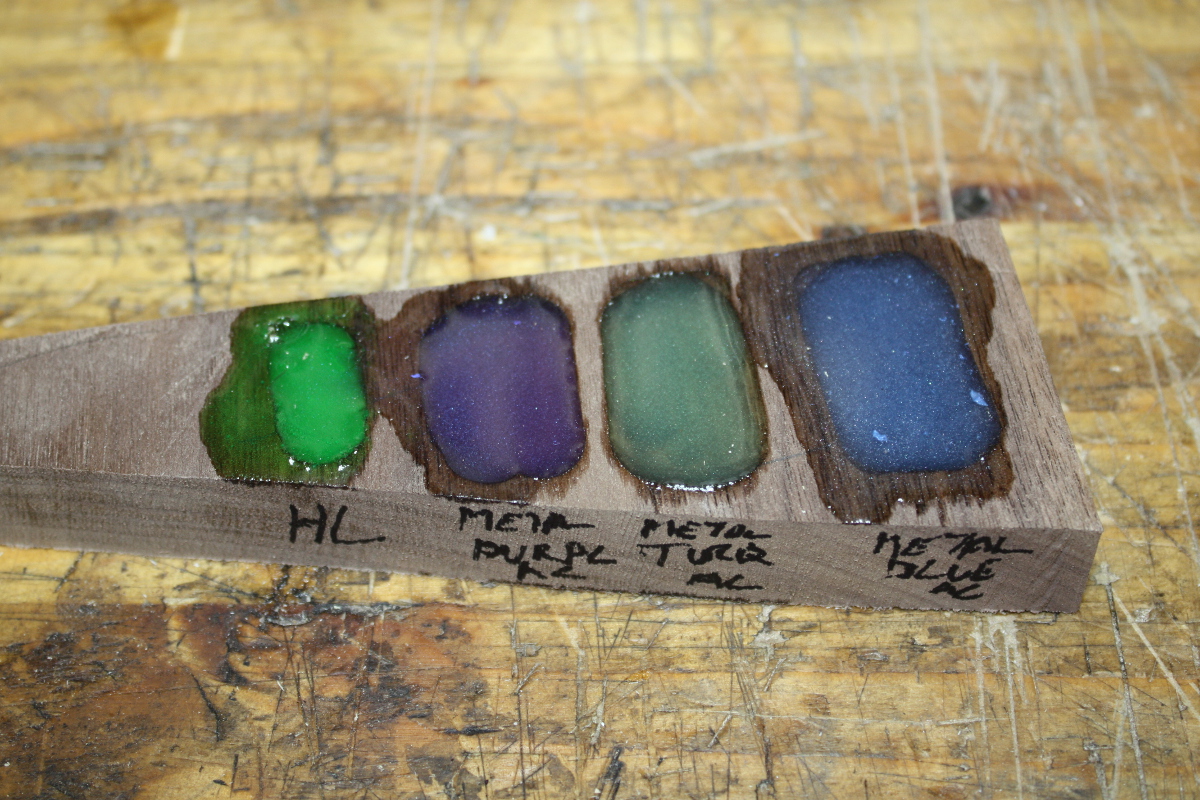
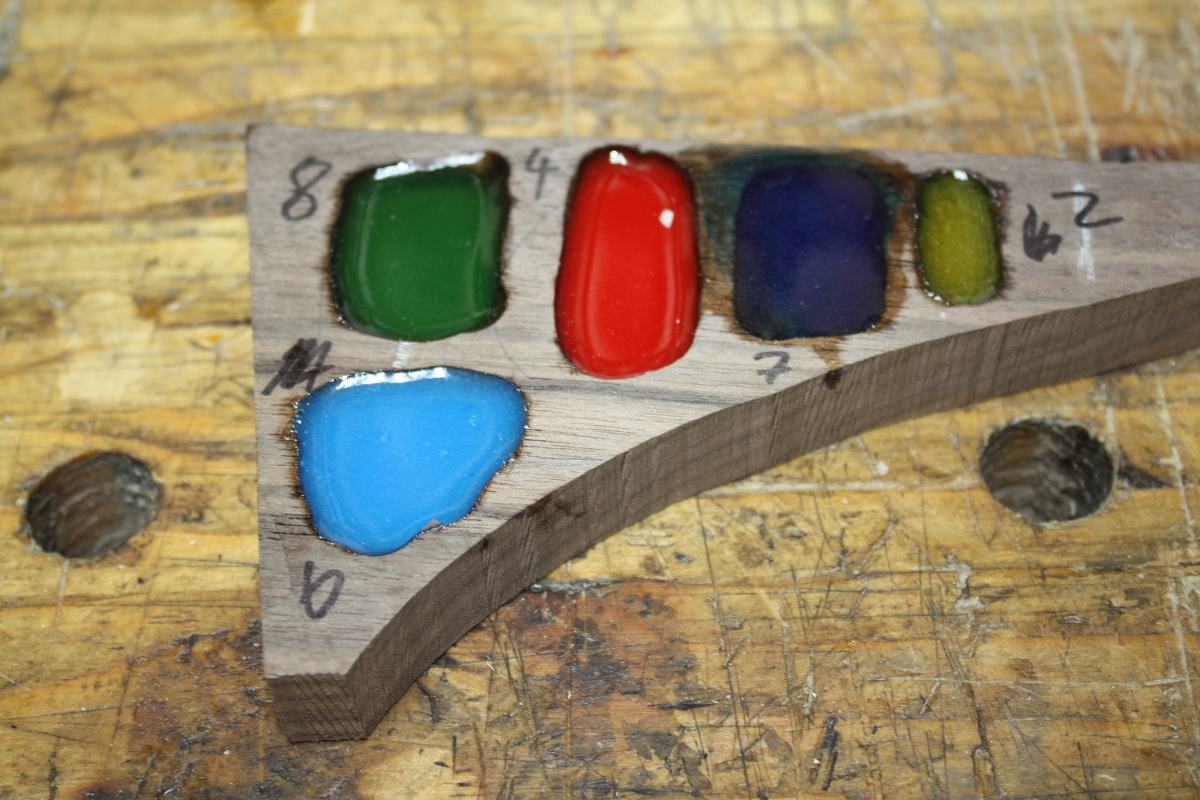
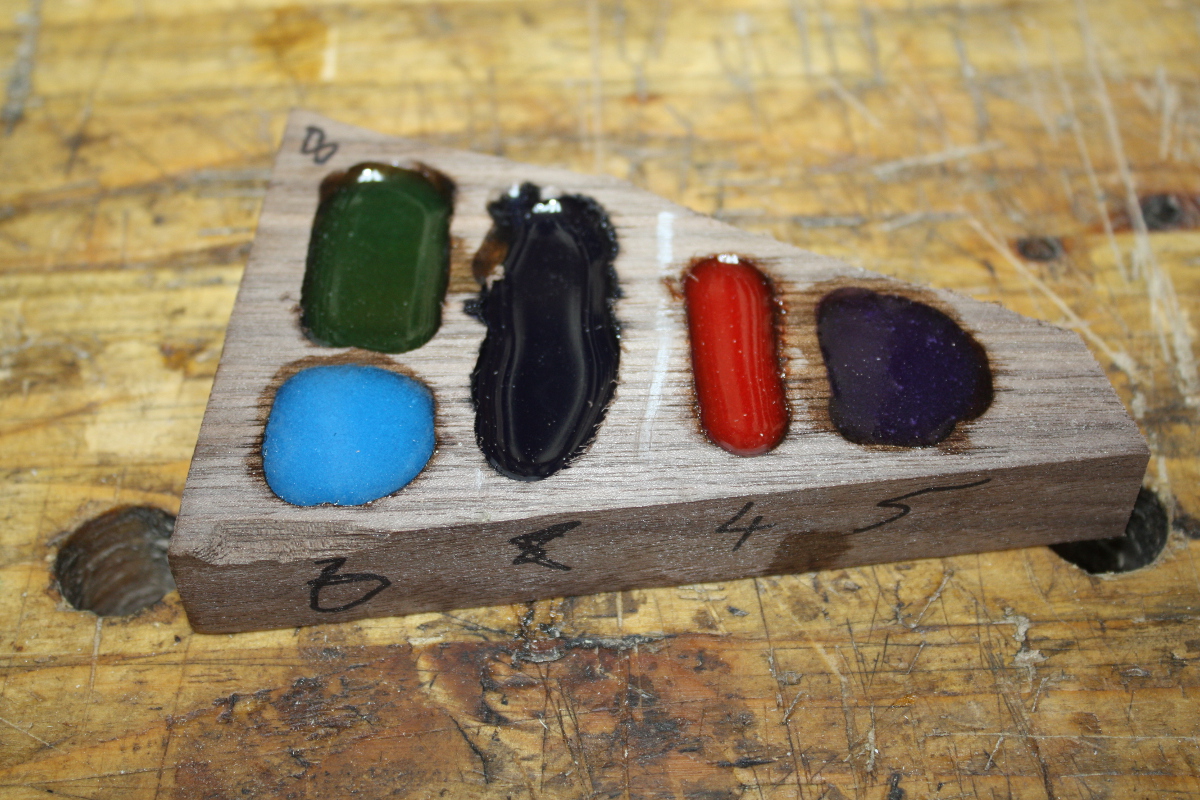
Calum picked out a few he liked as well (the ones with crosses beside them in pen). So now I’m just picking out designs to do for the various parts of the desk, shelves and sides. I need to print a few out and find some transfer paper, then some will be done by inlay and some with resin and some with a mix. I also ordered two new inlay handtools for a few curves I can see coming that will have to be done freehand (yeah, you could get router inlay bits but I think we’ve established by now that I don’t like the router very much).
Think I’ll skip banding this time though. For a later project, that one (and I have one in mind).
Meanwhile, I’m blocked for a few days so I made some progress on the oak box. Cutting the component parts was easy enough…
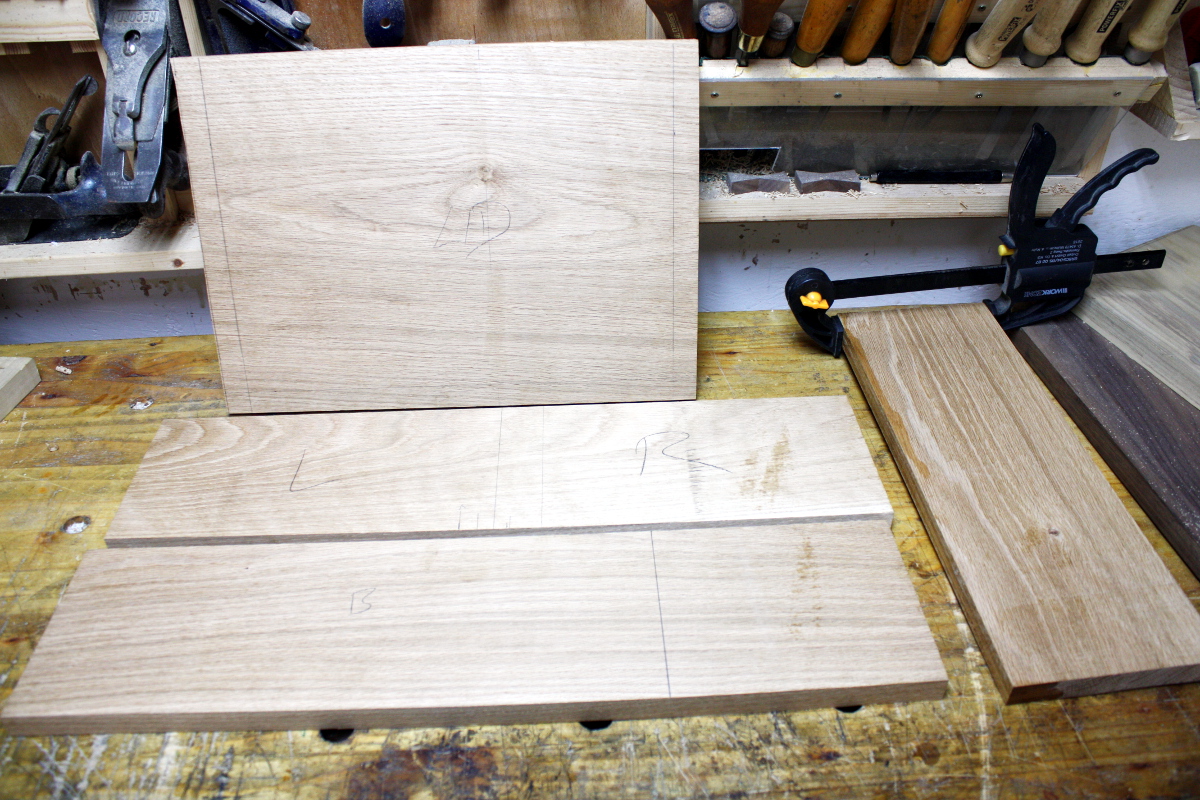
If anything I shouldn’t have cut them so early, but left that till after the carving. And I mucked up shooting the end of one…
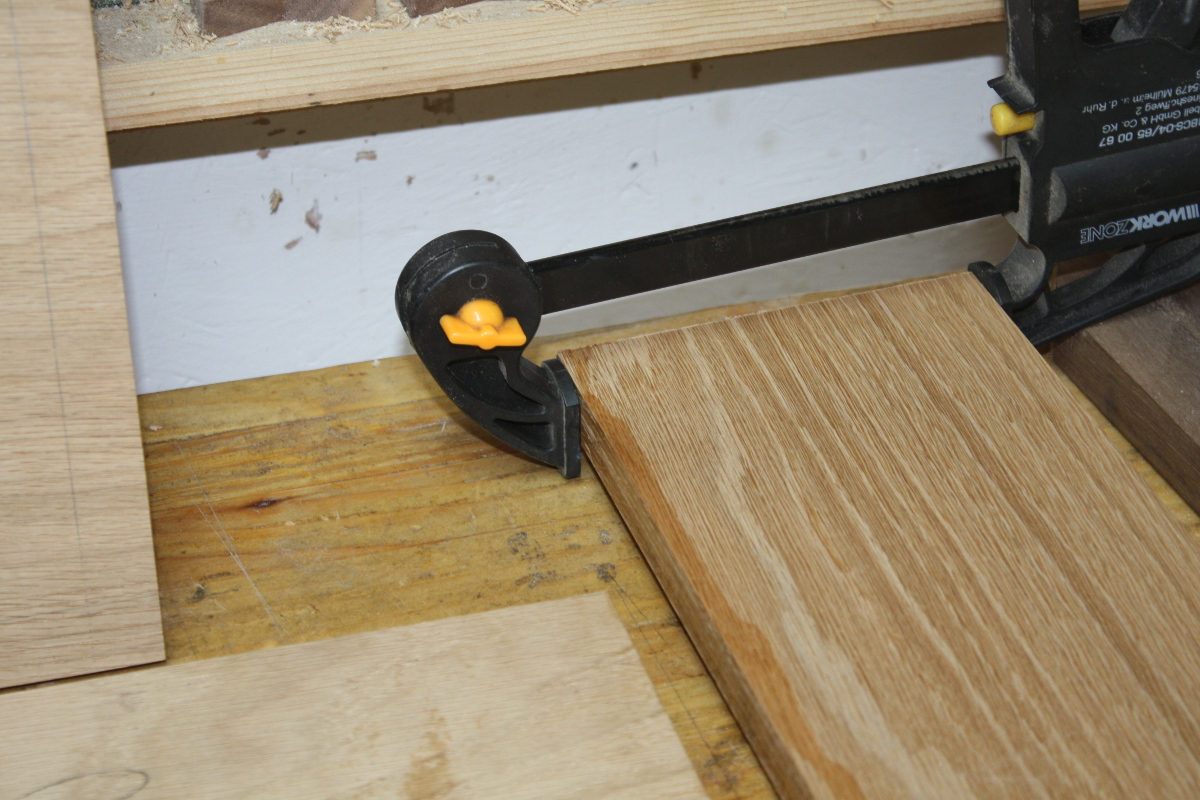
And of course the CA glue stuck to the clamp so unclamping chipped the board anyway. Le sigh.
But never mind, on to the fun stuff..
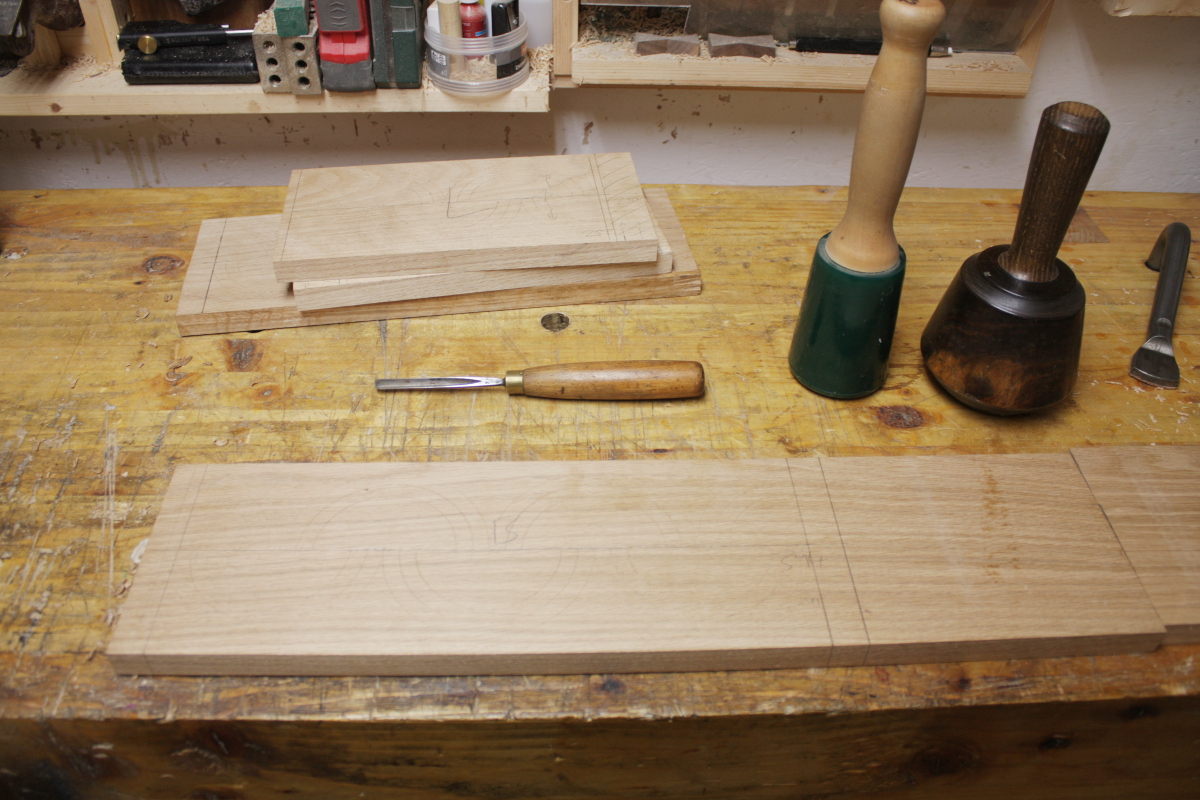
It might be hard to spot there because scratches on oak are, but I’ve marked a centerline and scratched in a series of opposing lunettes (to borrow Peter Follansbee’s term) and next up is cutting them with a V-tool. Well. Actually next up is spending some time with the diamond plates,
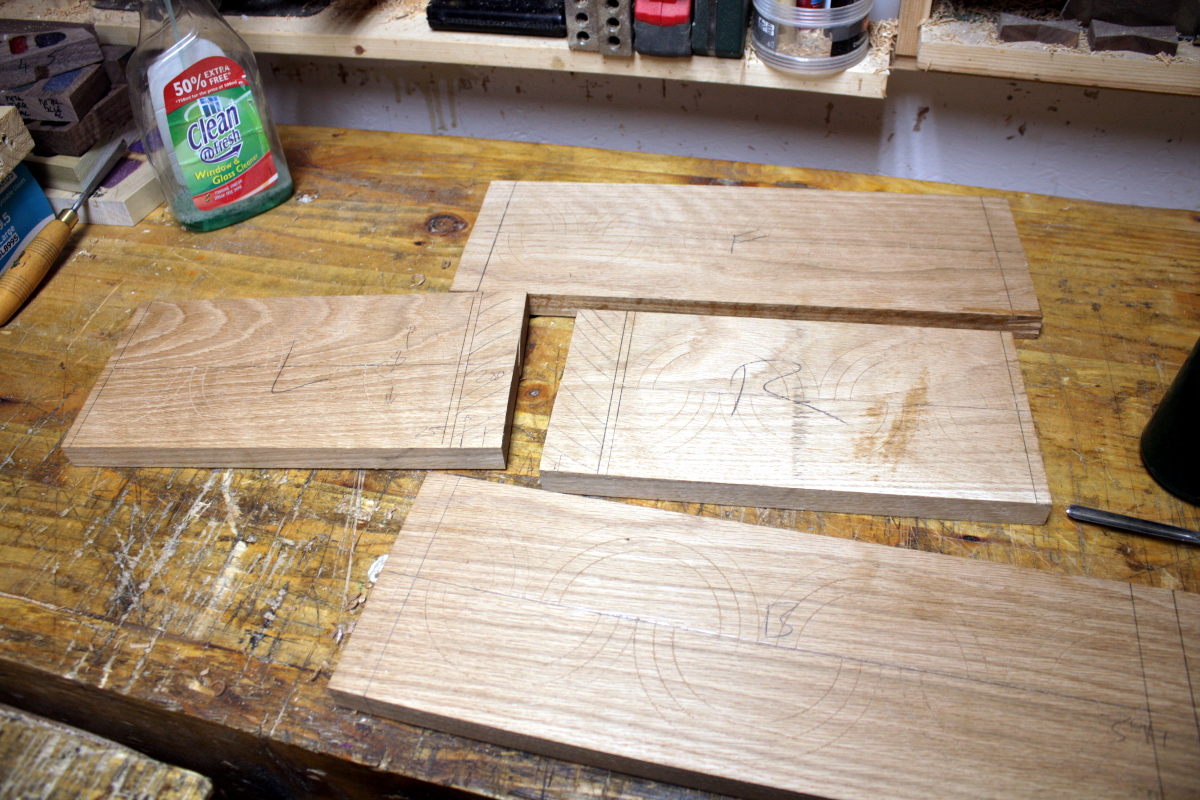
That’s all of them marked out in fact.
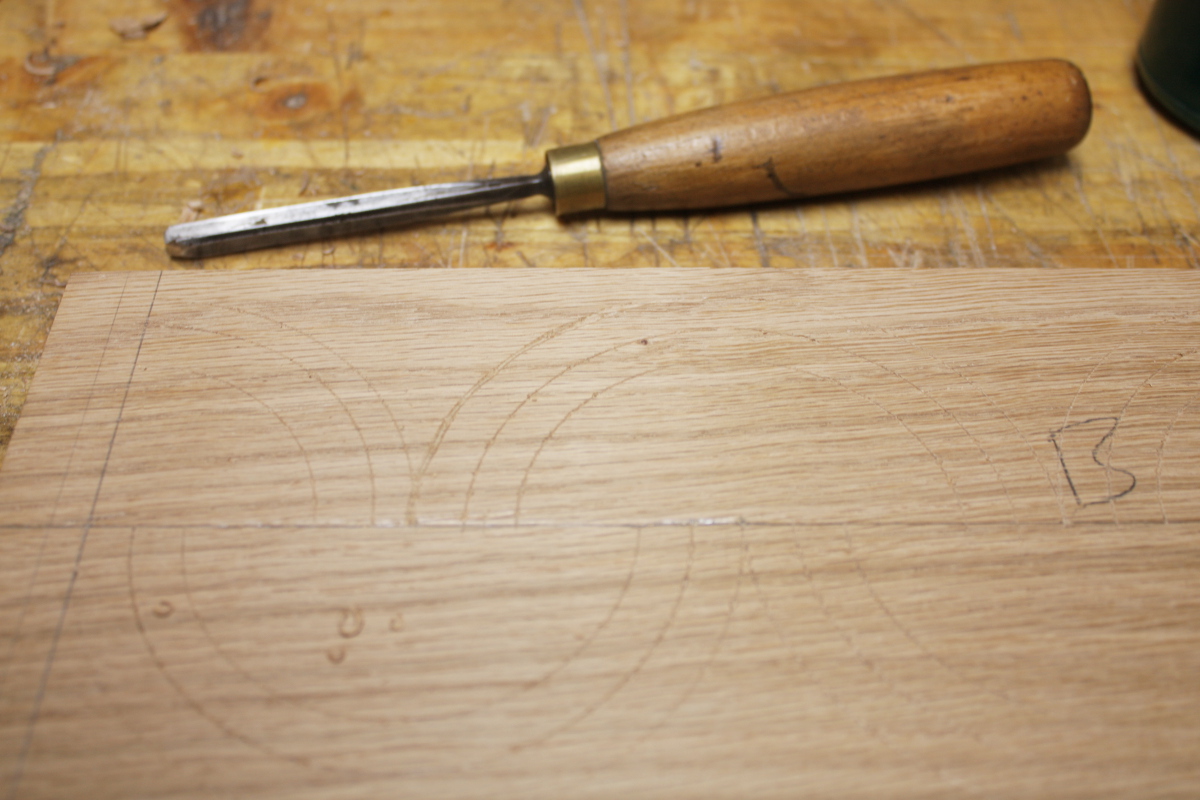
You can make out the scratches up close, but they’re still hard to see even standing in the shed. I wonder if Follansbee has it easier seeing these because he uses riven oak instead of this flatsawn stock. He’s said himself this is carvable but not the best.
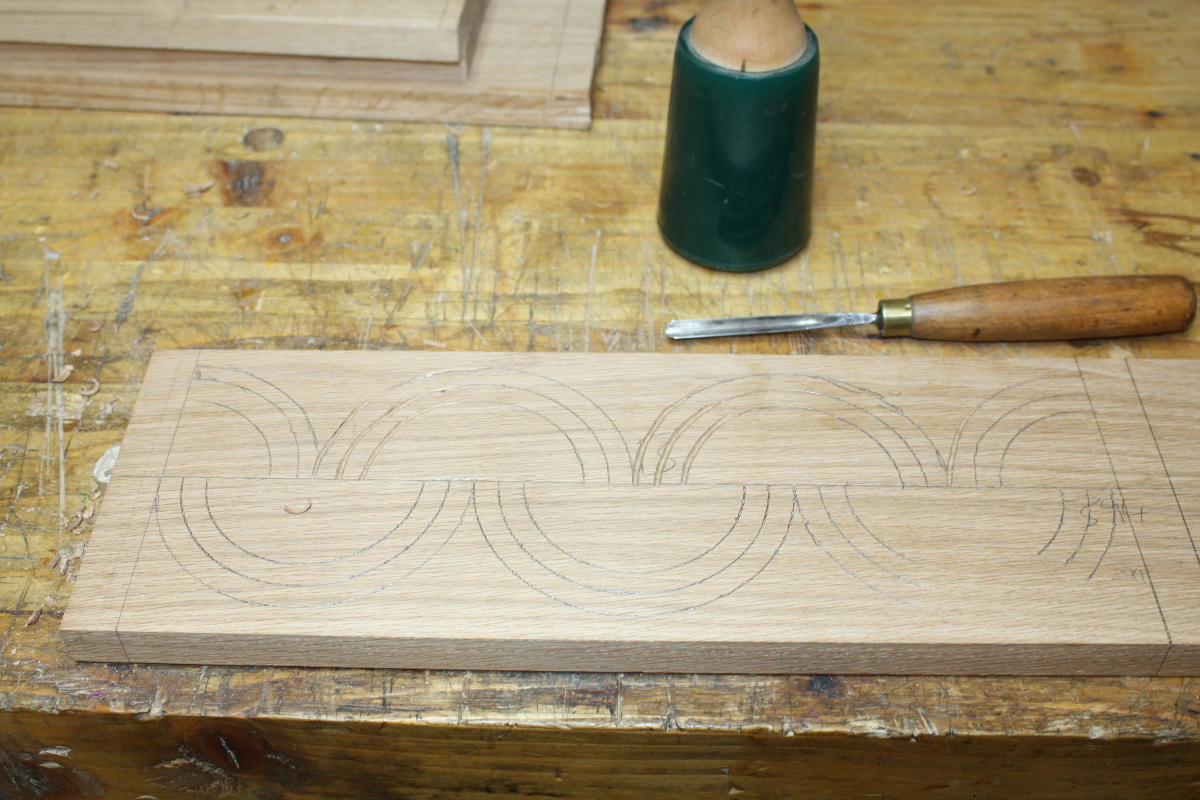
After a few minutes in fact, I gave up and just ran a pencil line around the scratches. They’re being carved out so it won’t mar the work.
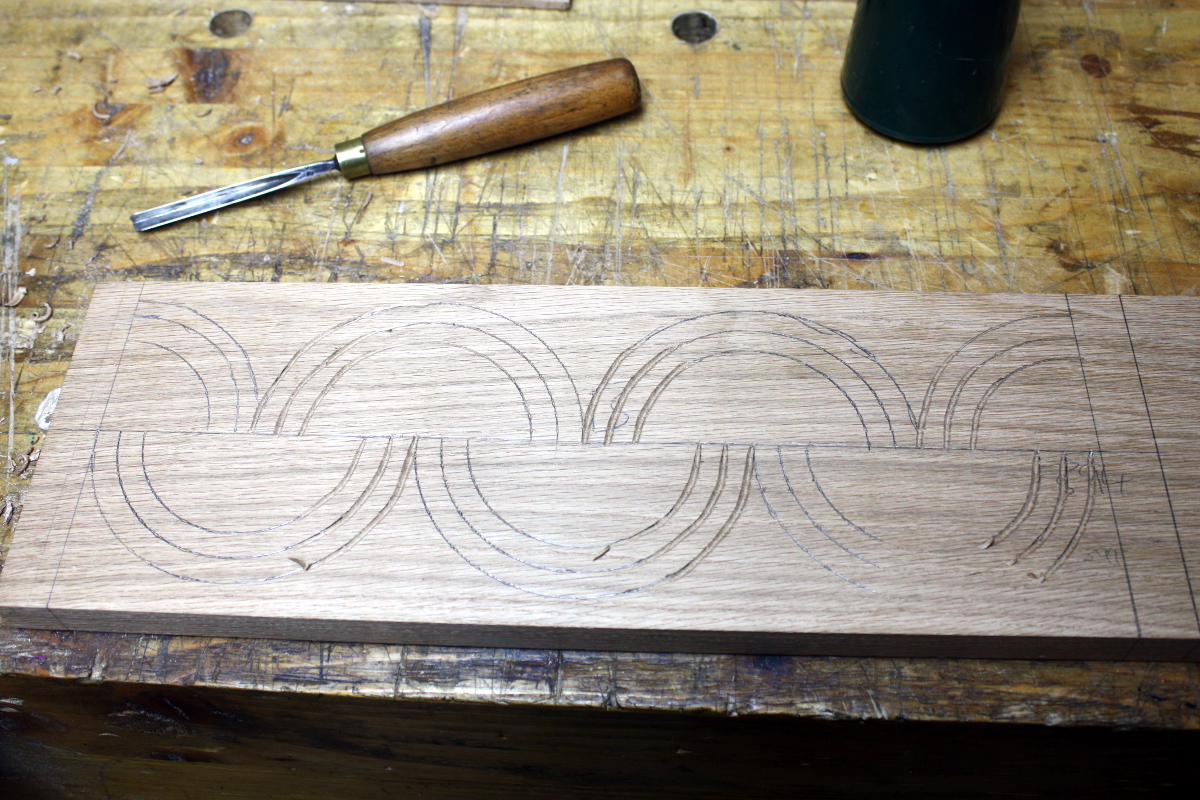
Then I just work my way along, cutting out the same part of the curve on every curve, then moving on to the next until all the lines are cut out. You have to cut in sections so you can brace your V-tool arm and control the cut. I say that like I’m cutting perfectly regular lines, but I have to go over everything once or twice already and it’s still not perfect.
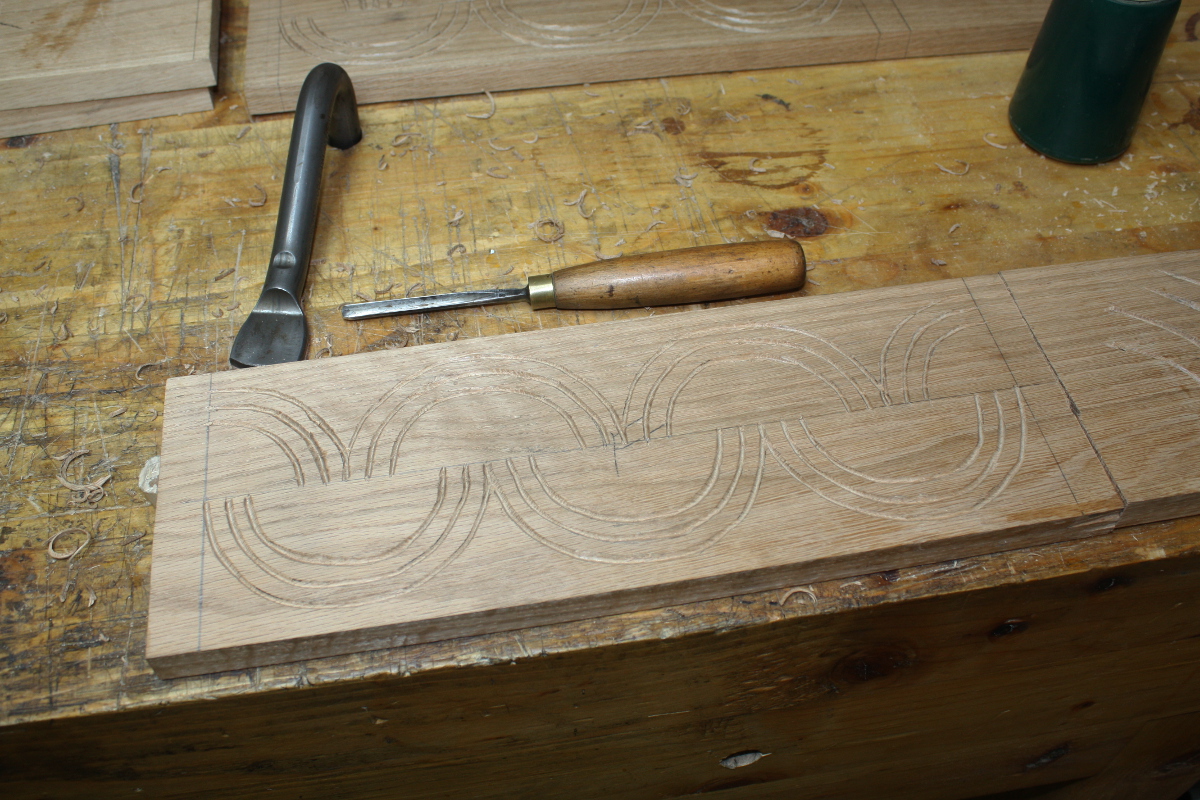
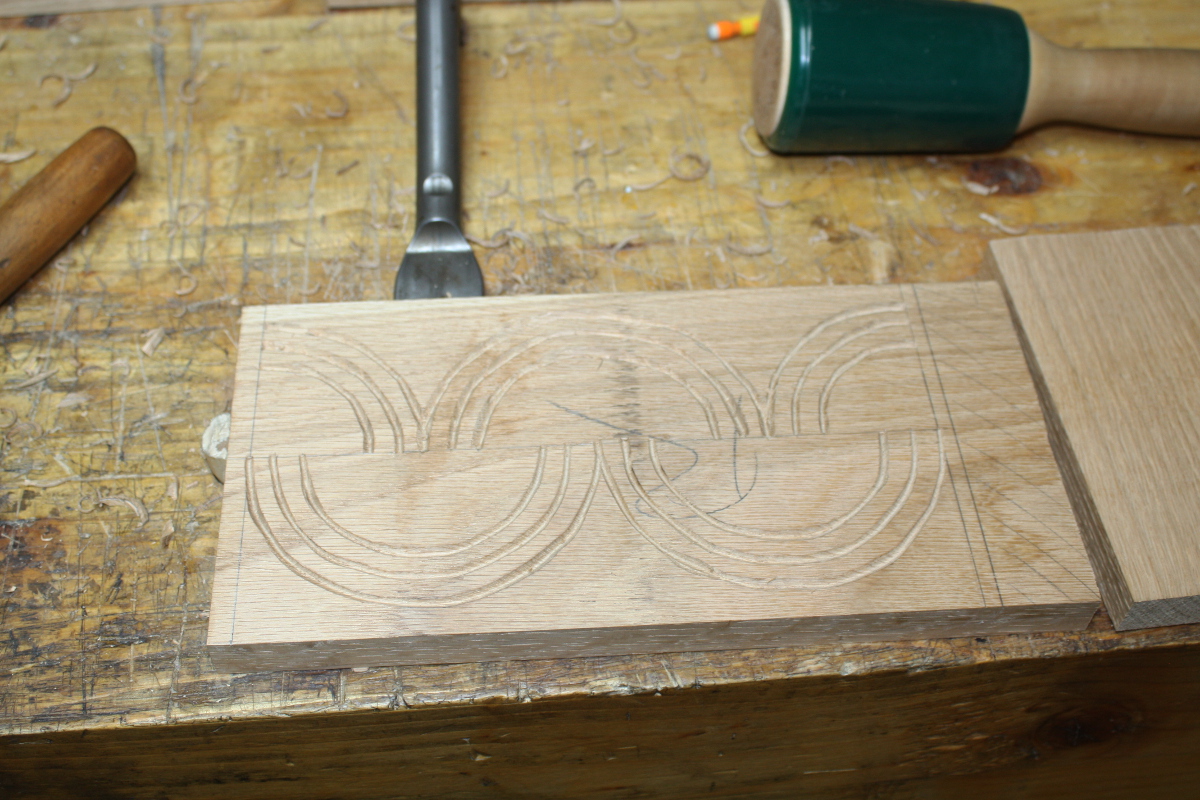
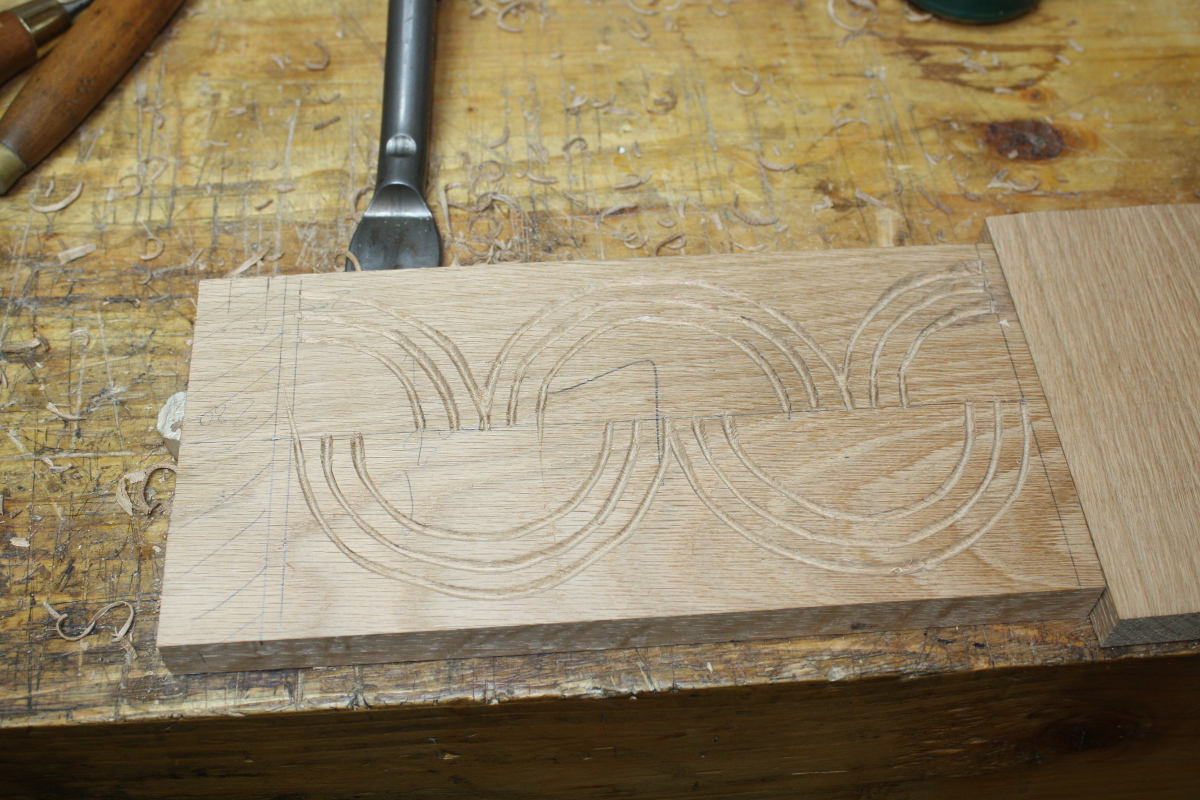
I mean, it’s not terrible, it’s just rough. Still though. Got all the V-tool work done on all the sides.
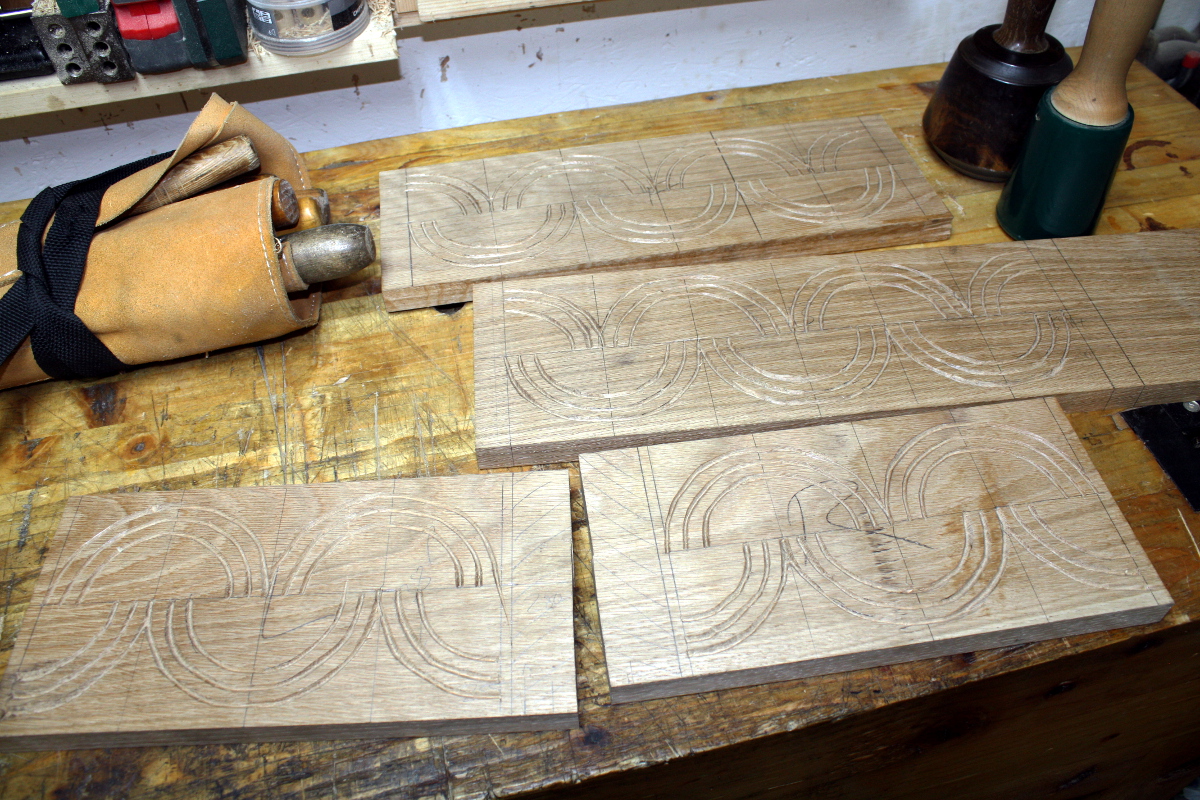
Next will be cutting the floral decoration. That’s done with a few gouges, so got some out to figure out what fits.
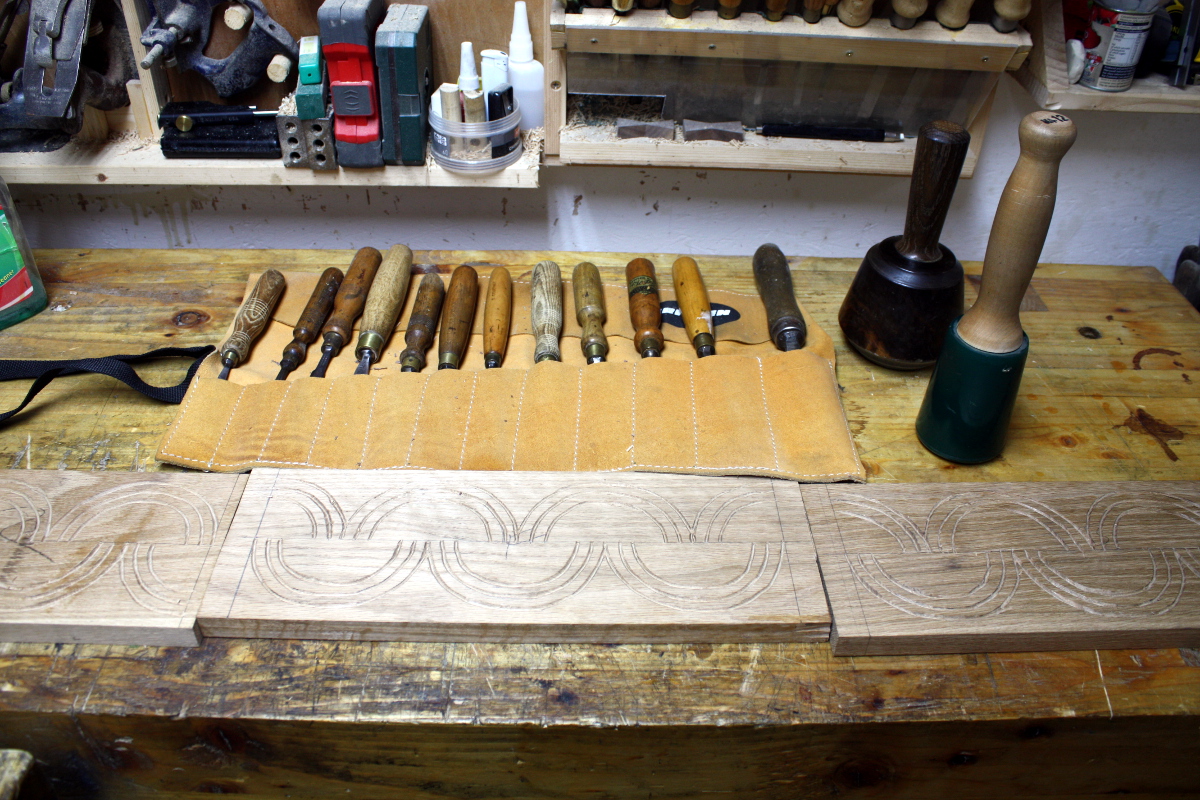
They’re all a bit small though. I suppose “you can never have enough gouges” is a thing as well. Still,
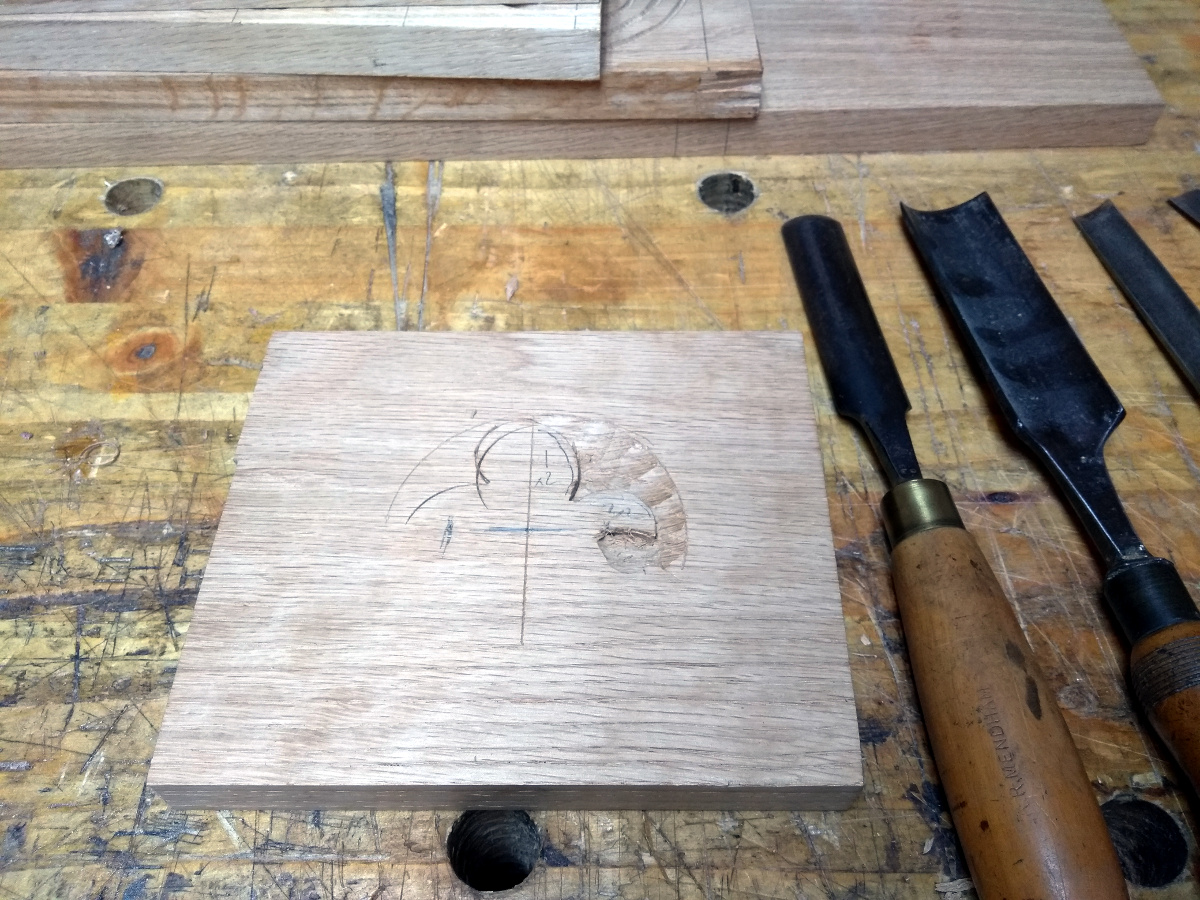
Bit of tidying up, some extra bits and pieces as decoration, and that should be reasonable enough so long as nobody looks at an original Follansbee for comparison…
